In this review, we take a look at the Venus Optics Laowa 12-24mm F5.6 lens for Sony FE-mount.
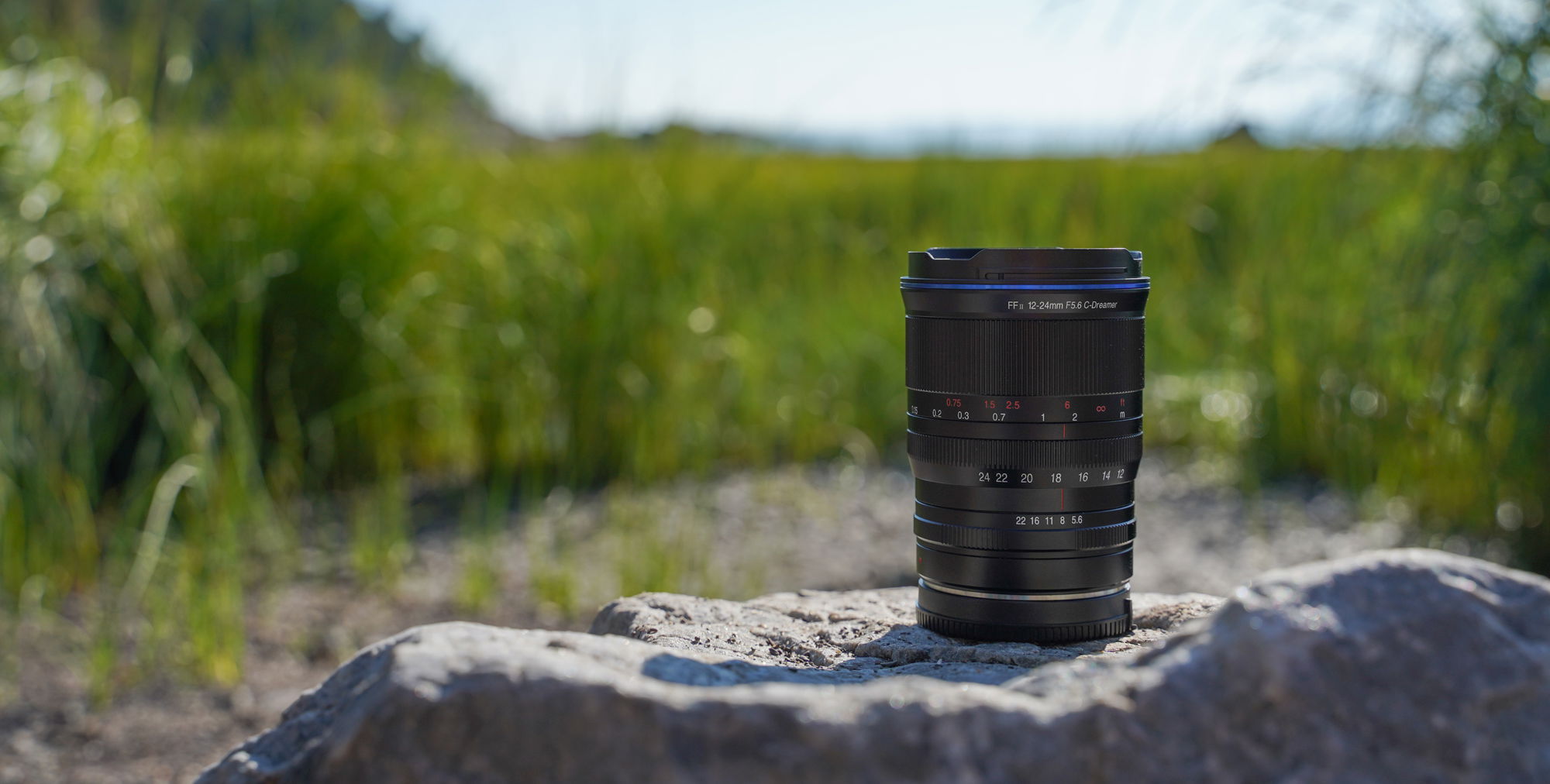
Table of Contents[Hide][Show]
Introduction
Laowa consistently surprises us with unique lenses, either with extreme specs (such as 2x macro) or by offering unique compromises to obtain a feature otherwise inaccessible. Now, they propose one of the widest zooms for full frame on the FE mount, a lens which is also cheaper than most alternatives, even considering primes.
This comes with two compromises. The first, as with other Laowa lenses, is that the 12-24mm is a manual lens. It offers no autofocus and no automatic aperture control. The other is that it offers a rather slow F5.6 maximum aperture, one or two stops slower than what is frequently offered. The company bets that, for wide angle work, a slow aperture is an acceptable compromise.
Like other Laowa lenses, the 12-24mm is compact, elegant with a fully metal finish, and well assembled. Can it meet expectations and deliver good optical performances? Read on to find out.
In this in-depth review, we will take a look at all the technical and artistic parameters which help to define a lens. Read on to find out everything there is to know about the Laowa 12-24mm F5.6 C-Dreamer!
Check Price & Reviews for the Laowa 12-24mm F5.6
At: B&H Photo | Amazon
Specifications
| Lens Name | Laowa 12-24mm f/5.6 Zoom C-Dreamer |
| Optical formula | 15 elements in 11 groups |
| Image circle | Full frame |
| Field of view diagonal | FF: 122° – 84° APS-C: 100.5° – 62° |
| Aperture range | F5.6/F22 |
| Aperture blades | 5 |
| Aperture ring | Yes |
| Max magnification | 1:2.5 |
| Minimum focus distance | 0.15m |
| Internal focus | Yes |
| Filter thread diameter | 77mm (with adapter) |
| Lens cap | Metal, bayonet |
| Lens hood | Integrated |
| Diameter x Length | 69.4 x 95.6 mm (2.7 x 3.7 in) |
| Weight | 497 g (17.5 oz) |
| Price (US MSRP) | $649 |
Construction and Handling
In this section, we take a look at the physical characteristics of the Laowa 12-24mm.
Front Element
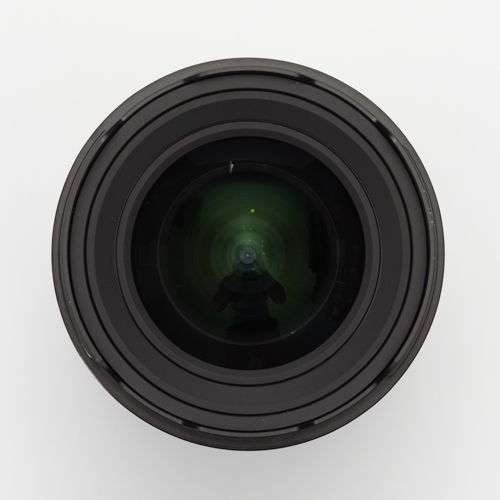
The front of the lens is devoid of markings. The glass takes up a large part of the total front surface. It bears Laowa’s “Frog Eye” coatings.
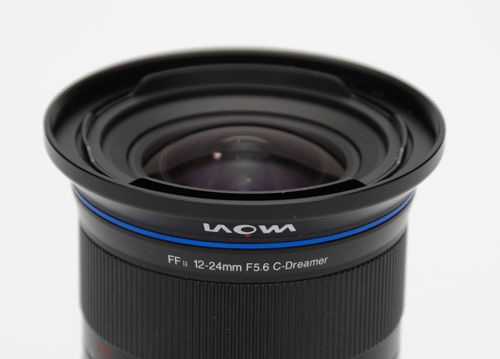

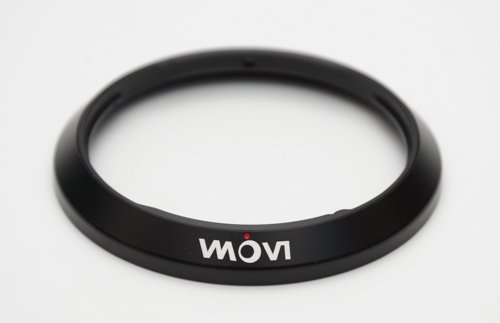
The lens does not support filters directly, but ships with an adapter to allow users to mount 77m filters. This way, the lens can remain shorter and narrower if no filter is mounted, while still offering the possibility to mount traditional filters. Bearing in mind that many ultra wide lenses do not offer filter threads, or use rear-mounted filters, this compromise is interesting. Mounting the filter adapter prevents the included lens cap from attaching, however.

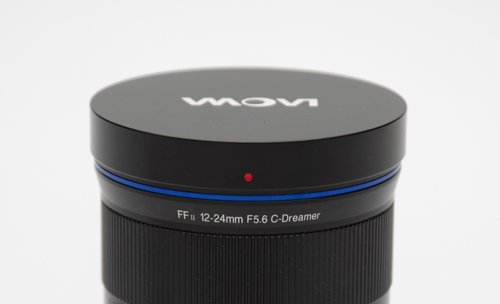
The lens cap is made of metal, and is a bayonet type, rotating in place.
Lens Body
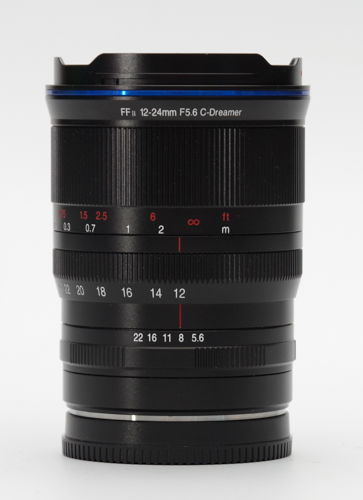
The Laowa 12-is as elegant, and as well made, as other Laowa lenses. Fully made of metal, compact and dense, and tightly assembled, the lens should pass the test of time with ease. It is wider towards the front element, slimmer nearer the camera body.
The bottom of the body, near the camera mount, shows the aperture ring. It cannot be de-clicked, and offers no automatic mode. Again, this is a fully manual lens. A discrete red dot on the side helps with alignment.

Higher up is the zoom ring. The lens gets wider at this location. It makes it a bit easier to locate by touch, because the ring is narrow and flush with the barrel. It requires a bit of practice to locate the zoom ring without grabbing instead the focus ring. We would have preferred to see more tactile feedback to locate the zoom ring more easily. The widening of the barrel on the ring is the best hint of where it is located.
This focus ring is higher up, quite large and the easiest part of the lens to locate. It turns smoothly and has numerous distance markings.
At the top is the lens name.
Aperture
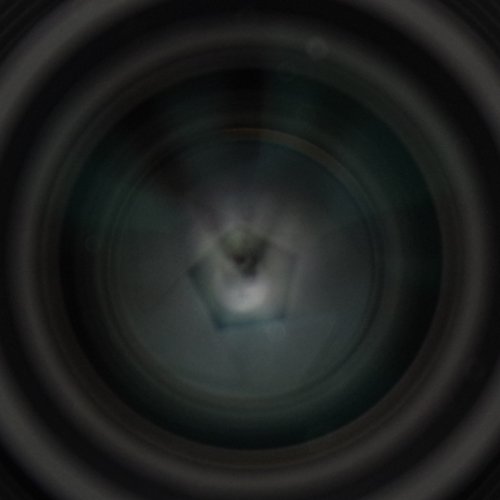
The Laowa 12-24mm uses 5 straight aperture blades.
Lens Mount
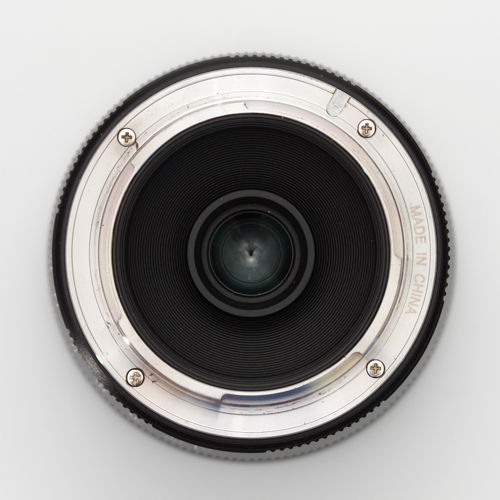
The lens mount is metal, without any contacts or features.
Lens hood
The lens is equipped with a slim, permanently attached lens hood. It is probably more cosmetic than anything else.
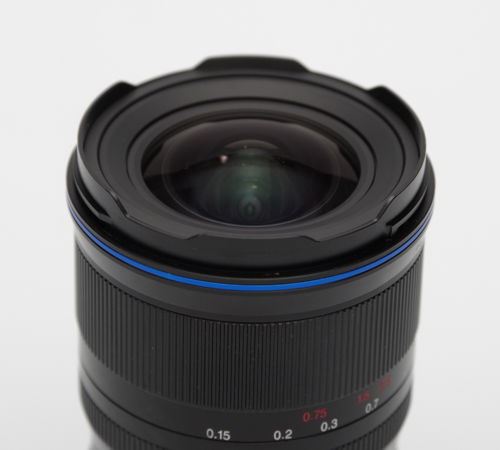
Mounted On Camera
The Laowa 12-24mm is a truly compact lens, especially given its focal range. The C in “C-Dreamer” stands for “Compact” and it is certainly accurate. It feels right at home on the small Sony A7C.
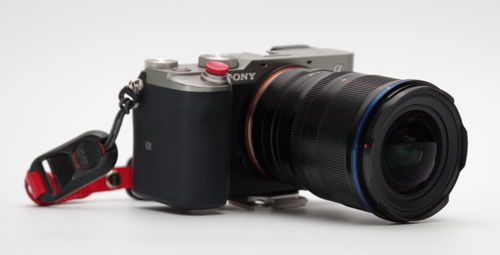
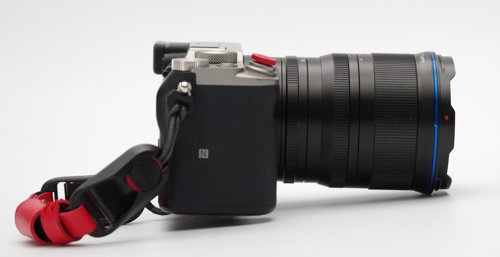
Side by side
Here is the Laowa 12-24mm next to the Tamron 20mm F2.8 and Tamron 28-75mm F2.8 version 1. The small size of the Laowa is immediately apparent.
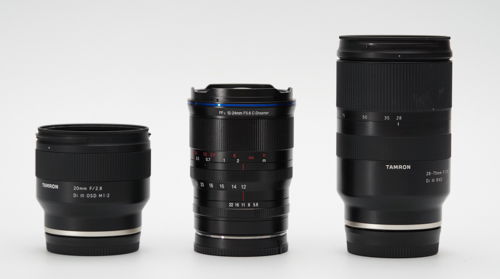
Focusing
Everytime we have a look at a Laowa lens, we praise the nice operation of its focus ring. The 12-24mm is no different. The focus ring is wide, easy to find, superbly dampened and accurate. Feedback is excellent. The ring is 2.5cm (1 inch) wide, and offers a moderately long throw of just over 90°. About two-thirds of the throw is devoted to distances below 1 meter, which makes it a bit harder to fine-tune the AF at longer distances. Luckily the depth of field is typically quite deep at wider angles, making it easier to nail focus.
This highlights a bit challenge with any manual lens. At close distances, focus peaking is dependable and shows the DOF moving forward and backwards. At longer distances, things get a bit trickier as it becomes harder to properly determine what is in focus. There definitely is a learning curve. Thankfully the distance markings on the lens are accurate, and can be used to confirm that focus is well adjusted. Using hyperfocal, while potentially slowing down the flow, is another way to reliably nail proper focus.
General Image Quality
Before diving into the technical aspects of this review, let’s have a look at the more subjective elements which can make or break an image.
Field of View
Ultra wide angle lenses can unlock photographic possibilities otherwise difficult to obtain. At 12mm, this lens is among the widest available for full frame Sony mount. One key feature of this Laowa lens is that it reaches up to 24mm, a more usual focal length for many. The 12-24mm closely matches the widest of many normal zooms, extending the range even more.

Wide angle is of course a natural match for landscape; it is the first thing that comes to mind for many. Cityscapes, architecture and interior photography are also logical applications. The 12-24mm doesn’t bear Laowa’s “Zero-D” moniker, a label reserved for their lenses with the very best distortion control (such as their 15mm) but it still does pretty well.

Magnification is impressive for such a lens, and it allows close focus up to 15cm, which means less than 3cm in front of the lens itself. This, coupled with the ultra wide angle, allows for dramatic perspective and points of view.

The limited aperture range means that subject isolation won’t be a forte of this lens. Getting “everything” in the frame and in focus will make more sense than trying to isolate a single element.
Thanks to its wide focal length and good control over tonal response, the Laowa 12-24mm shines as a “night sky” lens. The image below is an example, others can be found in the samples gallery near the end of this page.
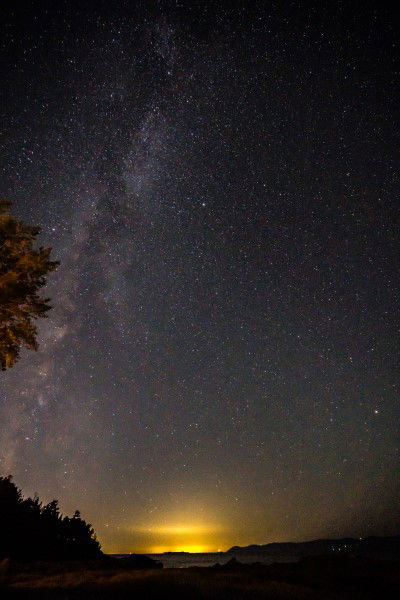
Fully manual lenses require that the user input the focal length in order to use image stabilization. For a prime, it’s a simple matter to enter the value once and forget about it. Even swapping back-and-forth between a fully manual prime, and an automatic lens, is straightforward since the camera remembers the last set value. With a zoom, things are more complicated, because the focal length constantly changes. This means users are faced with two choices: either re-enter the focal length each time, or make do without image stabilization. Otherwise, the risk is having the stabilization system worsen the image by incorrectly correcting for the focal length.
In addition to the effect on image stabilization, there is no lens information logged into the EXIF data, i.e. no focal length or aperture.
Color and Contrast
Just like other Laowa lenses, the 12-24mm produces images with natural colors, strong contrast without going overboard, and generally pleasing results.

The latter is true, except at wider apertures where flare is more present. It also doesn’t apply near 24mm, where image quality decreases visibly.

In general, luckily, the lens’ rendering is pleasing, and reacts well to post-processing.
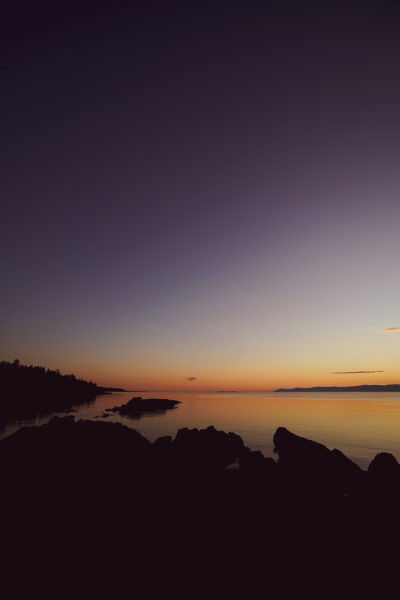
Starbursts
Laowa often puts a lot of emphasis on the starbursts produced by their lenses. This one is no different, with gorgeous, well-shaped and nicely tapering starbursts around light sources. Instead of becoming distracting, they improve images. They will appear at just about any aperture, so users who don’t like the effect should be warned.
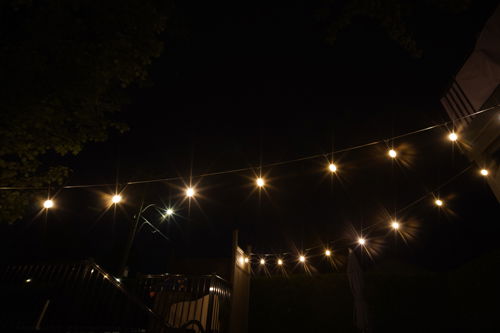
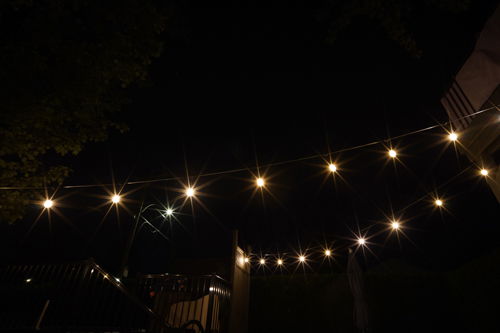

The samples section near the end of this review show further examples of what the lens can deliver. When used properly, the beautiful starbursts can enhance a scene and deliver dramatic results.
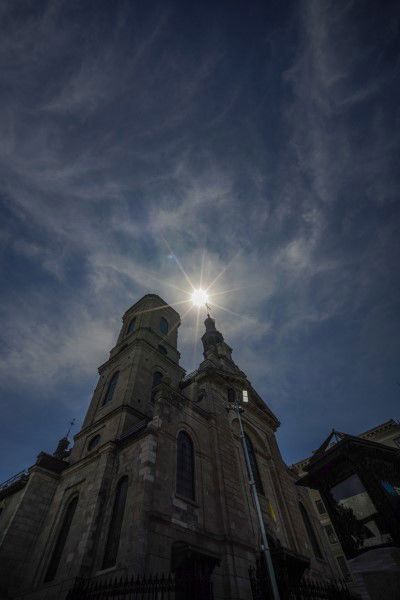
Metering and Exposure
Exposure with the lens proved generally consistent. At the widest angles, bright sources can throw the camera’s metering system a bit off, but it is rarely the case. With a manual lens, as long as the reported aperture values are accurate, exposure is solely dependent on the camera.
Sharpness
Sharpness, or a lens’s ability to resolve small details, is far from the only important characteristic of a lens, but it is probably the one which many users look at first. Soft images distract the viewer and the sharpest point in an image draws the eye.
There are several ways to measure resolution. Some are quantitative, such as the number of lines per millimeter that can be resolved, while others are comparative, such as using a standardized scene to pit lenses against one another. We will use the latter, and supplement it with real-life examples below.
To evaluate sharpness, we use a standard test chart that can be used to compare lenses to one another. We place the camera and lenses at a distance of 100x the focal length, so that the chart occupies the same area on all test images. This results in distances of 1.2-2.4 m in the present case. The chart is positioned successively in the center, on the edge and corner off the frame, testing all apertures each time. Focus is repeated for each position to avoid field curvature contributions.
This test will not show how good a lens can be. Quite the contrary, it is a stress test to illustrate the limits of a lens’s capabilities.
Resolution is of course sensor-relevant. For this test we use the A7C camera’s 24 MP sensor.
Test results at 12mm
The following images illustrate the results at all apertures at 12mm.
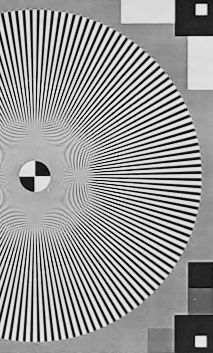
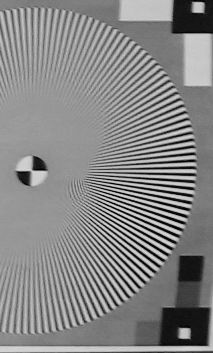
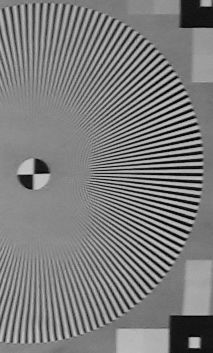


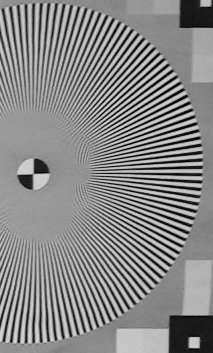


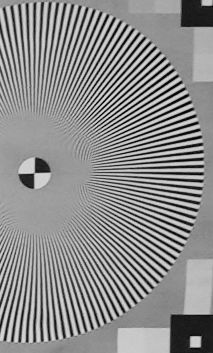
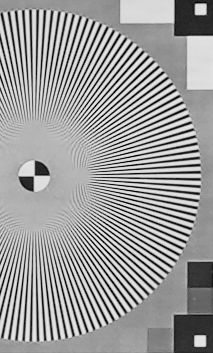

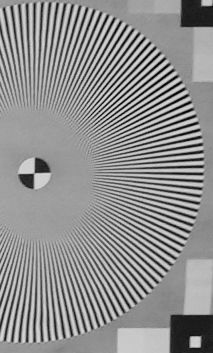
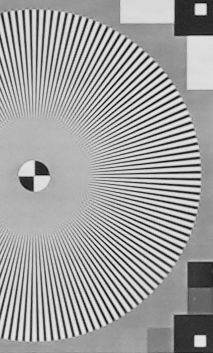
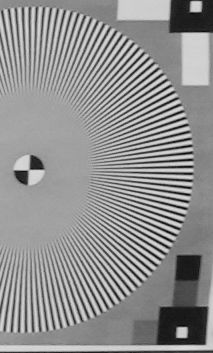

In the center, resolution with the Laowa 12-24mm is very good and quite consistent regardless of the aperture. F22 is weakest, as can be expected.
Edges and corners are never as good. F5.6 is seriously soft. F8 shows edges reaching resolution levels close to the center, if not quite there. Corners show their best results at F11.
To get sharpest results at 12mm, it is best to consider this lens as an F8-F11 lens.
Test results at 18mm
The following images illustrate the results at all apertures at 18mm.
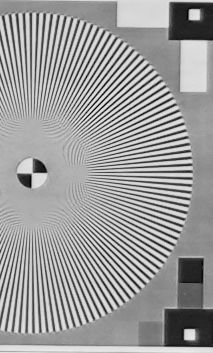
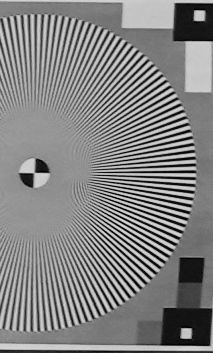
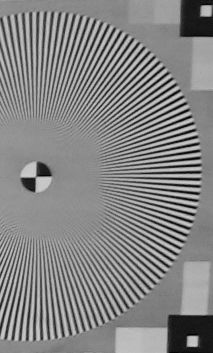




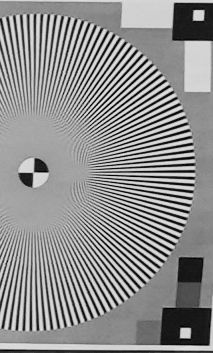
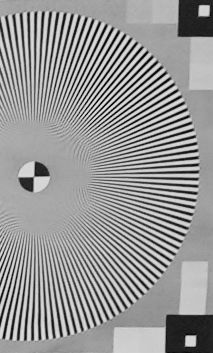
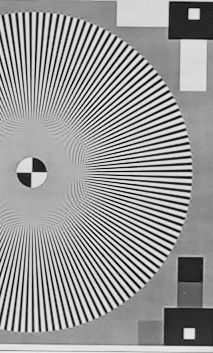

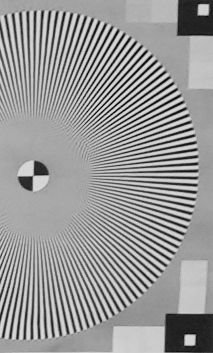


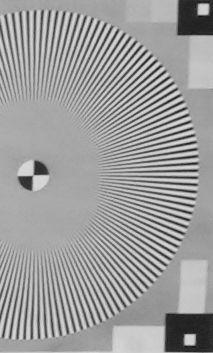
At 18mm and F5.6, the lens is soft throughout. The center improves dramatically at F8, reaching levels comparable to those of 12mm. edges also improve. Again, F11 shows the best results, with the center and edges reaching very good levels, and corners not too far behind. F16 is more usable than at 12mm, and F22 is again better left unused.
Test results at 24mm
The following images illustrate the results at all apertures at 24mm.
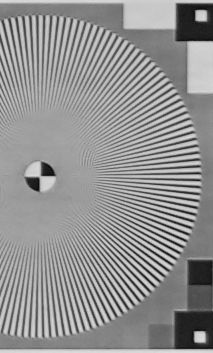

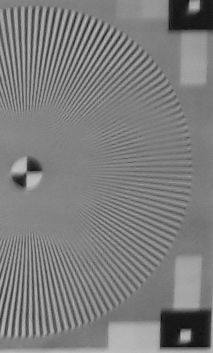


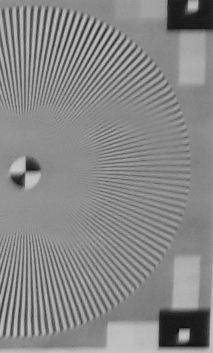
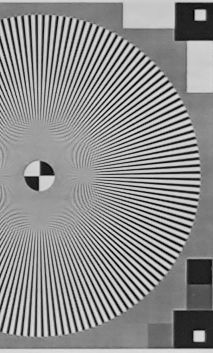
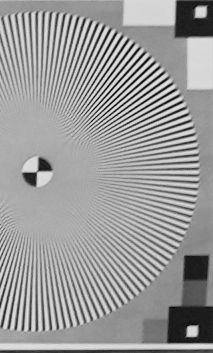
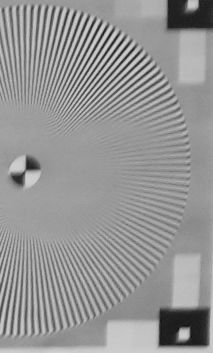
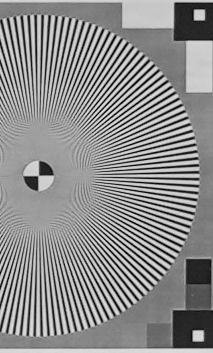
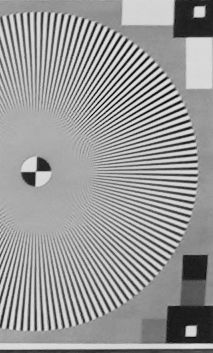


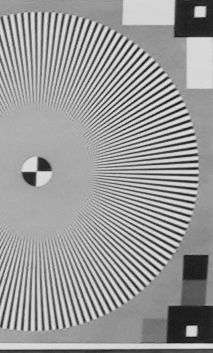

Results at 24mm are disappointing. Edges and corners never truly reach usable levels. Normally having weaker corners at the “tele” end of a lens isn’t truly worrisome, but here the longest focal length still is well within wide territory, where we generally aim for edge-to-edge sharpness instead of subject isolation.
The center isn’t much better. Surprisingly, it’s best at F16. F11 is marginally better, and F5.6-F8 are better left unused.
In short, 24mm is by far the weakest focal length for the Laowa 12-24mm.
Summary
The Laowa 12-24mm is, maybe, an overly ambitious lens regarding sharpness, considering its size and price. Corners are never impressive in our tests, and the lens is best used at its widest focal lengths and at F8-F11.
However, all is not dark, and in real-life cases images can often deliver perfectly adequate sharpness. The image below is a 100% crop of a close focus scene captured at 24mm, illustrating the best that the 12-24mm can produce at this focal length.
Check Price & Reviews for the Laowa 12-24mm F5.6
At: B&H Photo | Amazon
Vignetting
Vignetting, or the darkening of corners at wider apertures, is both a defect and a feature, as it can be used creatively to put emphasis on subjects closer to the center, create a mood or a vintage look. It can also be corrected automatically by modern cameras so is less of a problem than in the past. That is only true for lenses with electronic contacts, which sadly excludes the Laowa 12-24mm. We expect, with such a wide angle lens, to see vignetting manifest at wider apertures.
The following chart illustrates the vignetting of the lens for full frame when left uncorrected.

Generally speaking, vignetting is barely dependent on the focal length, with 12mm producing the strongest effect. Wide open vignetting is strong, with values between 1.75 and almost 2.5 EV depending on the focal length.
The vignetting decreases regularly until approximately F5.6, where it tends to even out. It is necer completely absent but harder to notice at smaller apertures
We recommend activating automatic vignetting corrections with this lens, unless the effect is used creatively. It is clear that this is one area where the designers made compromises.
The images below show the lens’s vignetting at varying apertures.
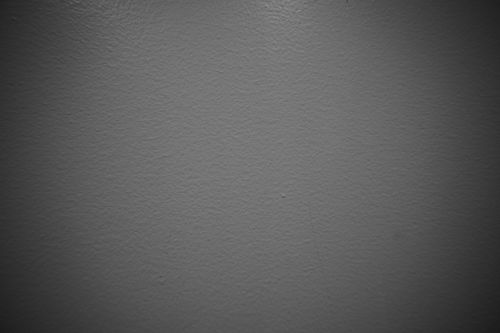
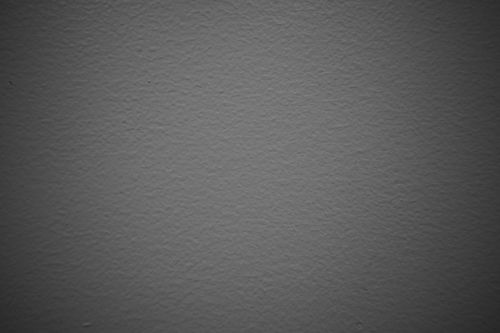

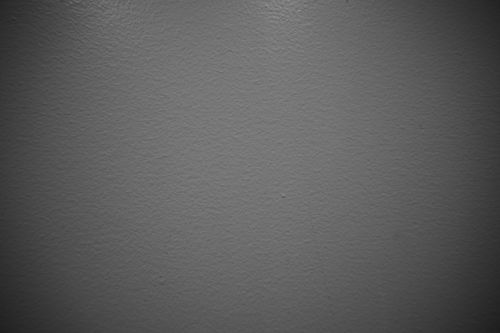


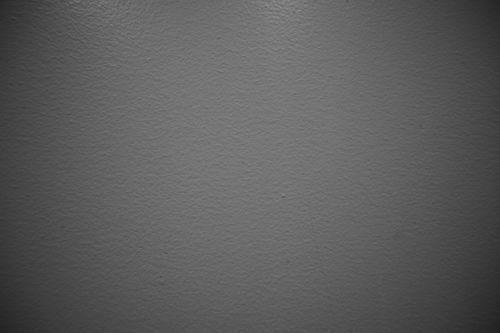

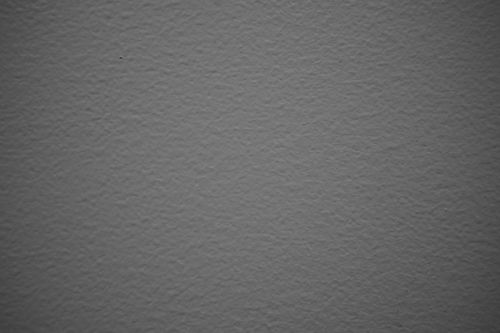

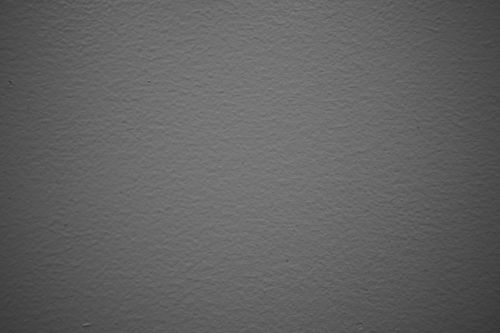


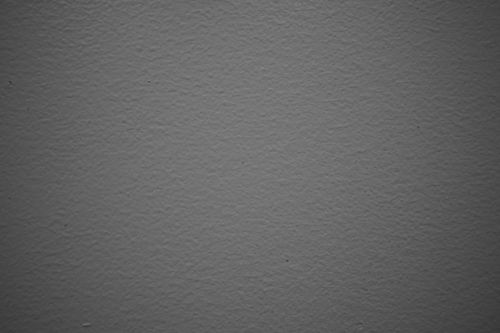
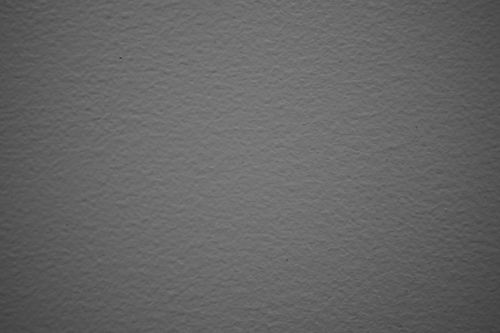
Bokeh
Bokeh is a Japanese term describing the quality of the background blur. It does not relate to the depth of field but to the areas in the image that are beyond the range that is expected to be in focus.
Bokeh is highly subjective. In general, a smooth bokeh with blurred shapes and contours is generally perceived as being of a higher quality. A shallow depth of field does not always equate a more pleasing bokeh.
To evaluate the characteristics of the background blur, we took pictures at varying apertures, using a scene with a lot of detail and bright highlights. The following images show the results.
The Laowa 12-24mm is an ultra-wide lens, with a moderate maximum aperture, and a low number of straight aperture blades. This might sound like a recipe for disaster, but the lens actually does pretty well. It has its quirks, in particular pentagonal-shaped highlights, but transitions are gradual enough to remain pleasing, and the shape of the highlights gives some character without becoming distracting.
The images below are further examples of the lens’ rendering.
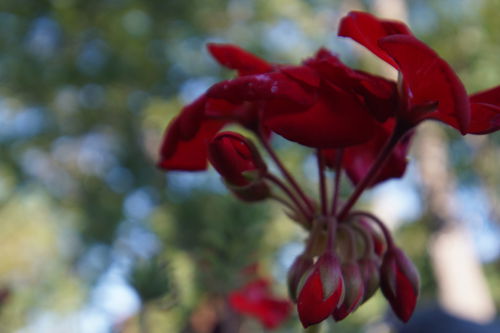
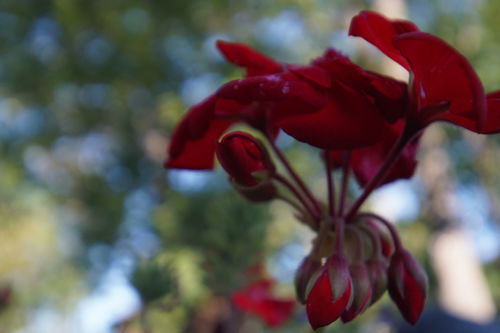

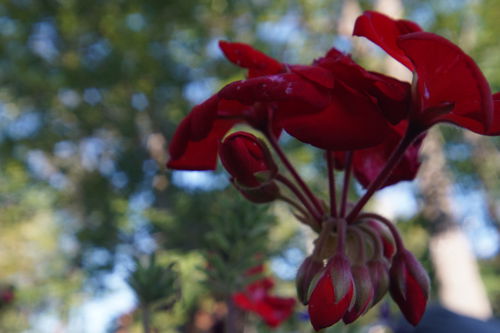
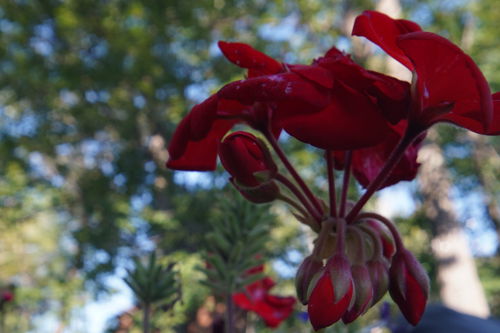
Flare and Ghosting
Flare is a decrease in contrast caused by reflections on internal lens elements. Ghosting is the appearance of orb-shaped artifacts in an image containing a light source, caused by the same internal reflections. High-quality coatings reduce the importance of flare and ghosting in an image.
We test flare and ghosting by taking pictures of a bright light source positioned at the center and on an edge of the frame, at varying apertures. We took a look at both extremes of the range.
Test results at 12mm
At its widest angle, with the light in the center, flare is manifest even wide open. It shows as an orange halo visible in the corners, as well as some ghosts lose to the light source and a decrease of contrast close to it. A case could be made that the orange ring/halo can be used creatively, but this is certainly not a desirable result. That halo remains visible until F16. The good news is that the ghosts remain well controlled even after the aperture closes. In short, the lens shows quirks but flare is not completely out of control.
With the light in the corner, a string of ghosts on the diagonal is visible at all apertures. At F5.6, a strong flare effect seems to shoot out of the light source, moving farther from the camera at F8 and gone by F11. A few extra ghosts appear at smaller apertures.
Test results at 18mm
At 18mm, results in the center are better. The orange ring is gone, and flare is limited to a small area around the light source. Some ghosts appear there also but in general, these artifacts are unobtrusive. In the corner, the string of ghosts is still there but harder to spot. The flare “burst” is still present at F5.6 and F8, still with reduced contrast.
Test results at 24mm
Results at 24mm are different. At F5.6, with the light in the center, there are a number of flare rings around the light, gone by F8. Ghosts are almost absent. In the corner, again a flare burst appears at F5.6 and F8. There is a smaller number of ghosts than at wider focal lengths, hard to spot in general terms.
In summary, F5.6 and F8 generate an important amount of flare and ghosting, and the effect is more prominent at wider focal lengths. Some care must be taken with bright light sources.
Chromatic aberration
Chromatic aberration (CA) occurs because different colors do not always have the same focal point. With modern lenses designs, which are better corrected than vintage designs, this is more likely to occur in out-of-focus areas. CA effects are more visible near fast transitions from bright to dark areas.
Most modern cameras have built-in tools to remove CA, but this doesn’t apply to fully manual lenses like the Laowa 12-24mm. Corrections can be applied after the fact in an editing program, but it is useful to know what to expect, and if a user should plan to systematically apply those post-processing corrections.
Our test sets up the camera at 45° and focuses on the center of the frame, with targets at the center, top and bottom. Images are captured at varying apertures at 24mm.

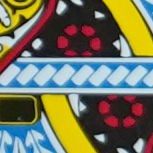

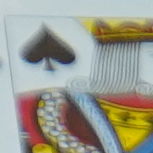
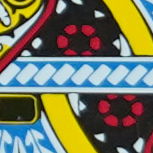

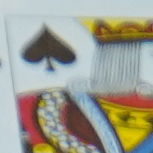
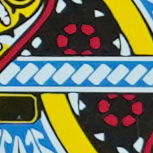



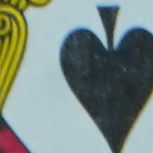
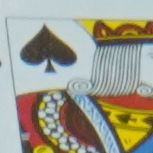
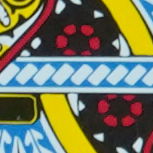
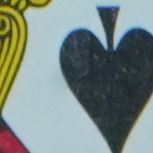
Chromatic aberration is not prominent, but some purple fringing is still discretely visible at the top and bottom in our test images. It is more visible in black-to-white sharp transitions. The following image shows a cropped example of an occurrence of purple fringing.

Distortion
Distortion refers to a lens’s ability to represent straight lines as straight lines… Wide angle lenses frequently generate barrel distortion, while longer focal lengths are more likely to cause pincushion distortion.
The Laowa 12-24mm reaches an ultra-wide aperture. As such, we expect some distortion, particularly at the wider end.
We use a standard test pattern of straight lines and test at varying focal lengths.
The images below show the uncorrected distortion figures at various focal lengths.
12mm
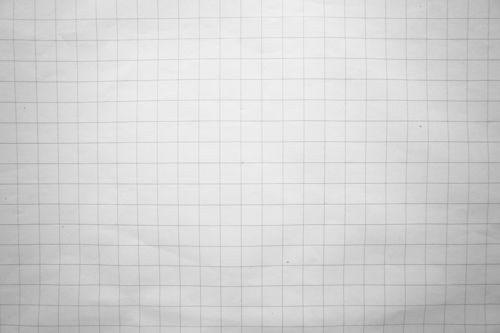
18mm
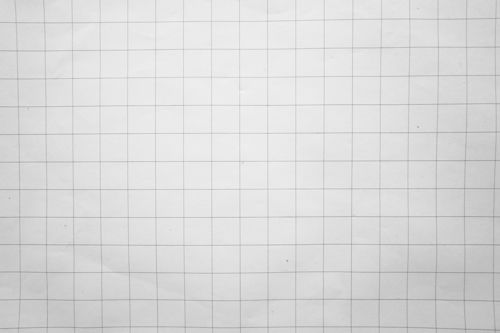
24mm

The Laowa 12-24mm shows surprisingly good results for an uncorrected ultra wide zoom lens. At 12mm, we measure 0.6% of barrel distortion, whereas at 18mm and 24mm, pincushion distortion reaches only 0.5% and 0.3% respectively.
We have seen primes perform worse than this, even at longer focal lengths. Laowa did not label the 12-24mm as “zero-D” but it comes close. Results are of course not perfect, and the nature of ultra-wide lenses means that even low distortion, when spread over a large field of view, will become apparent in the right circumstances. Still, it’s hard to wish for better results than this.
Sample images
Here is a gallery of samples images captured with the Laowa 12-24mm. You can click on individual images for a larger view.
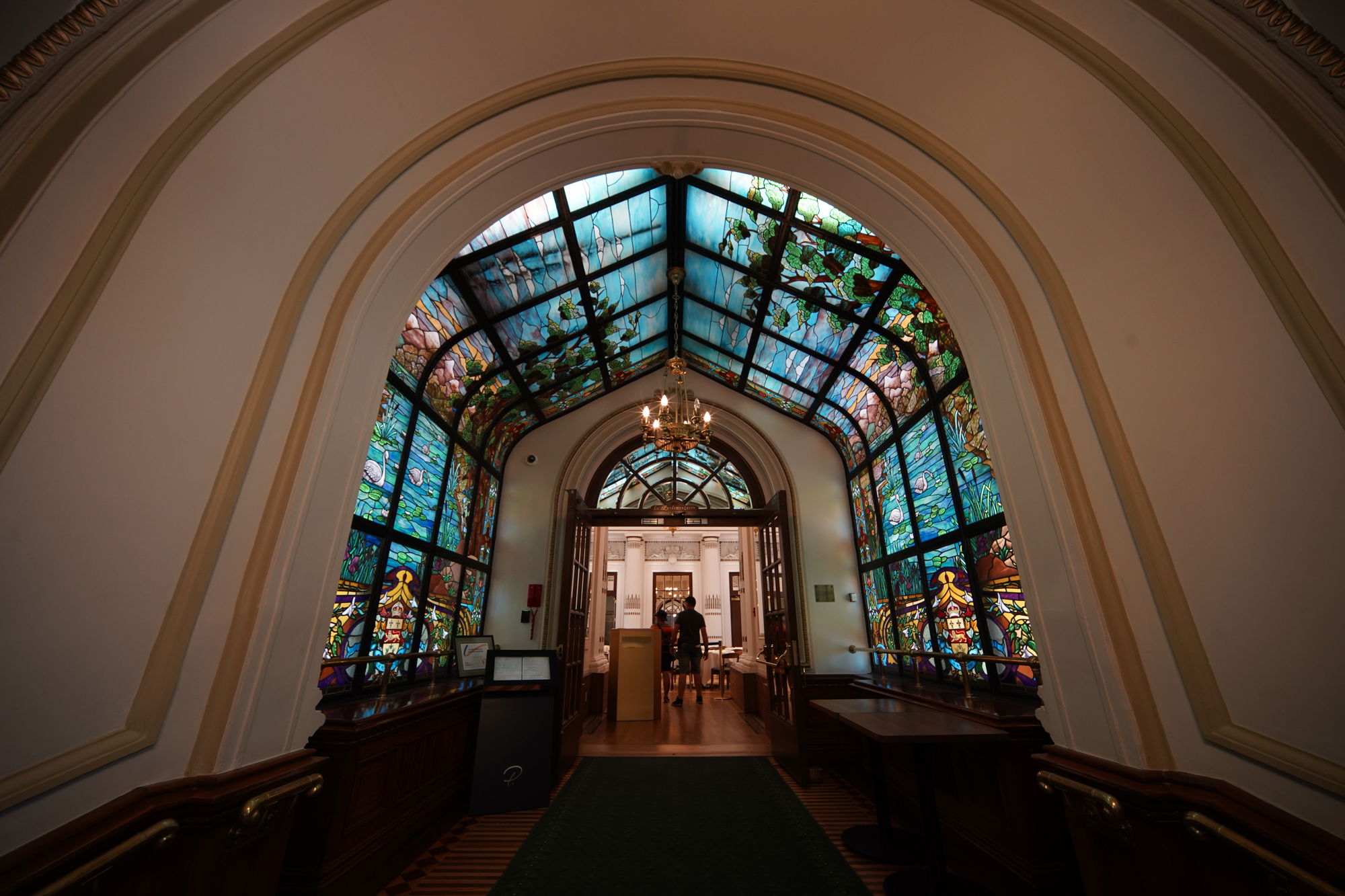
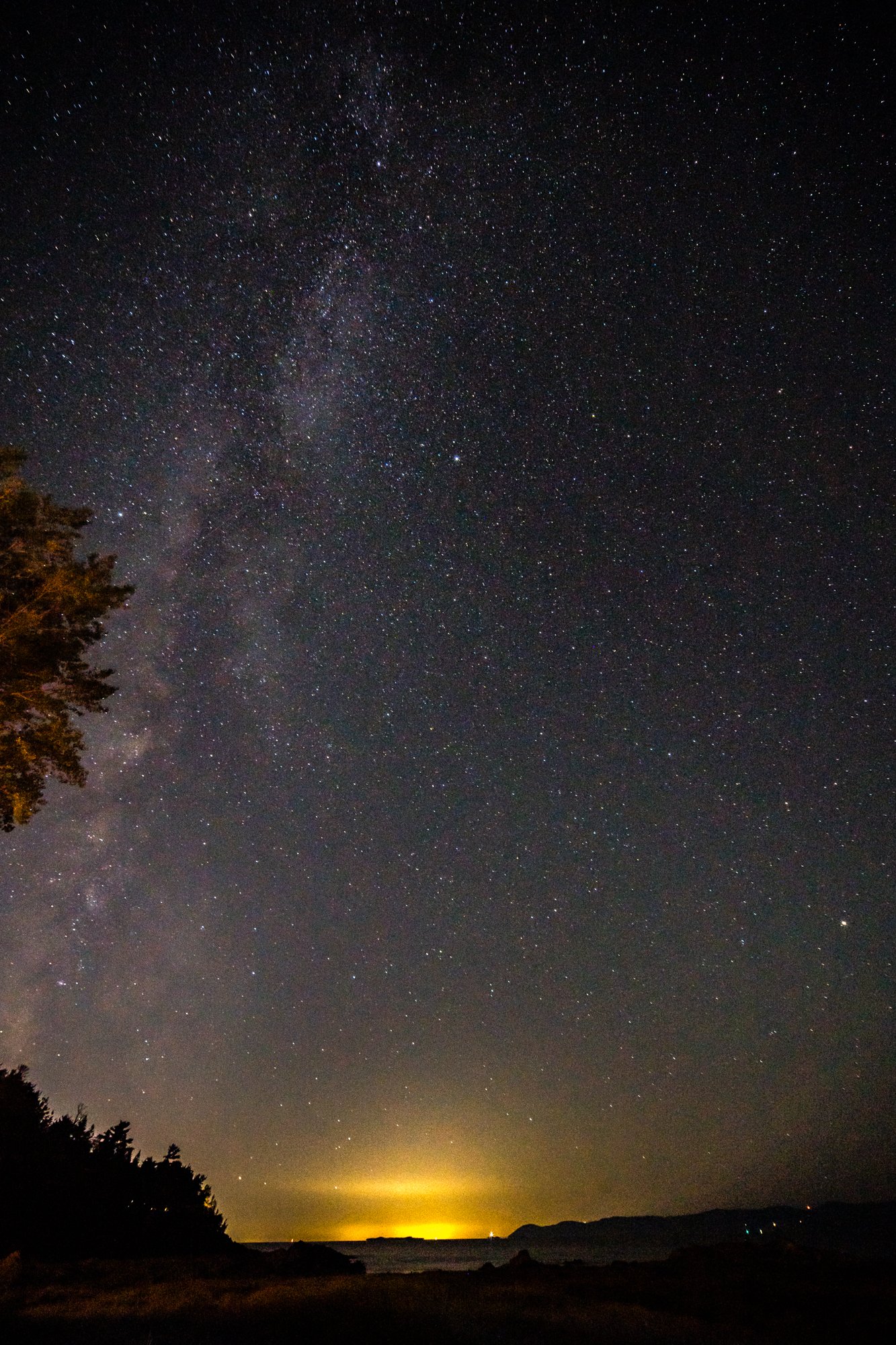
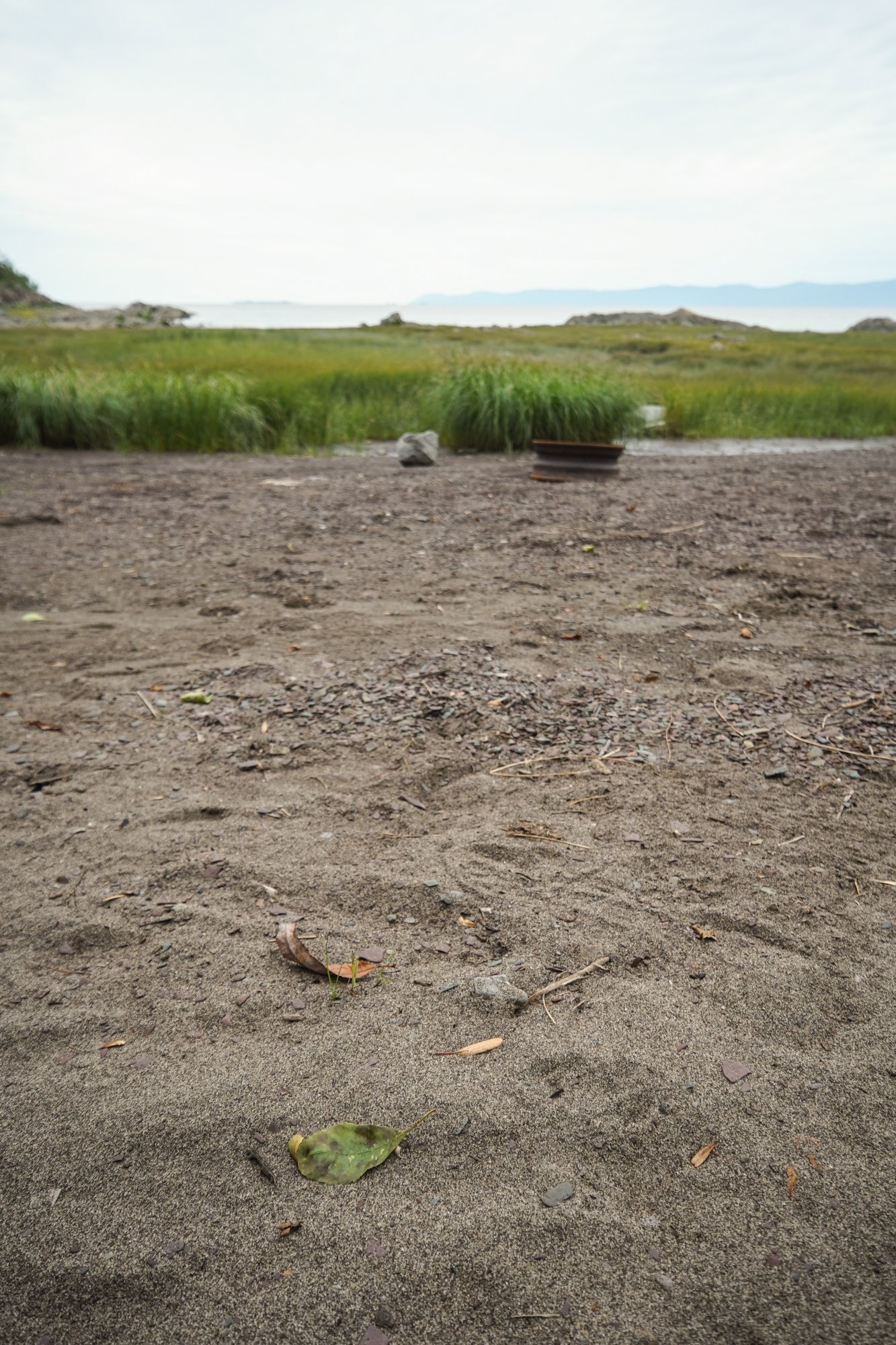
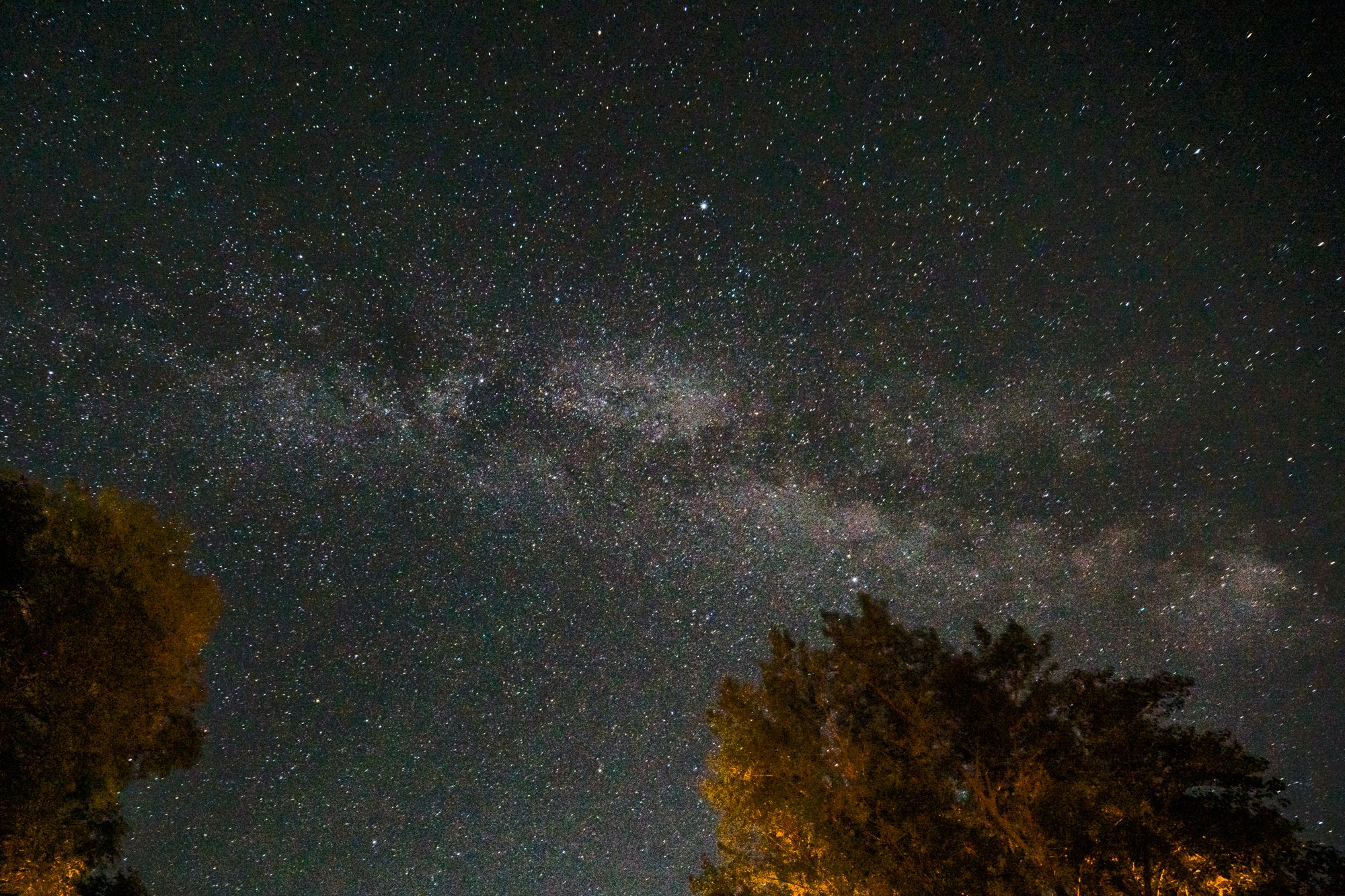
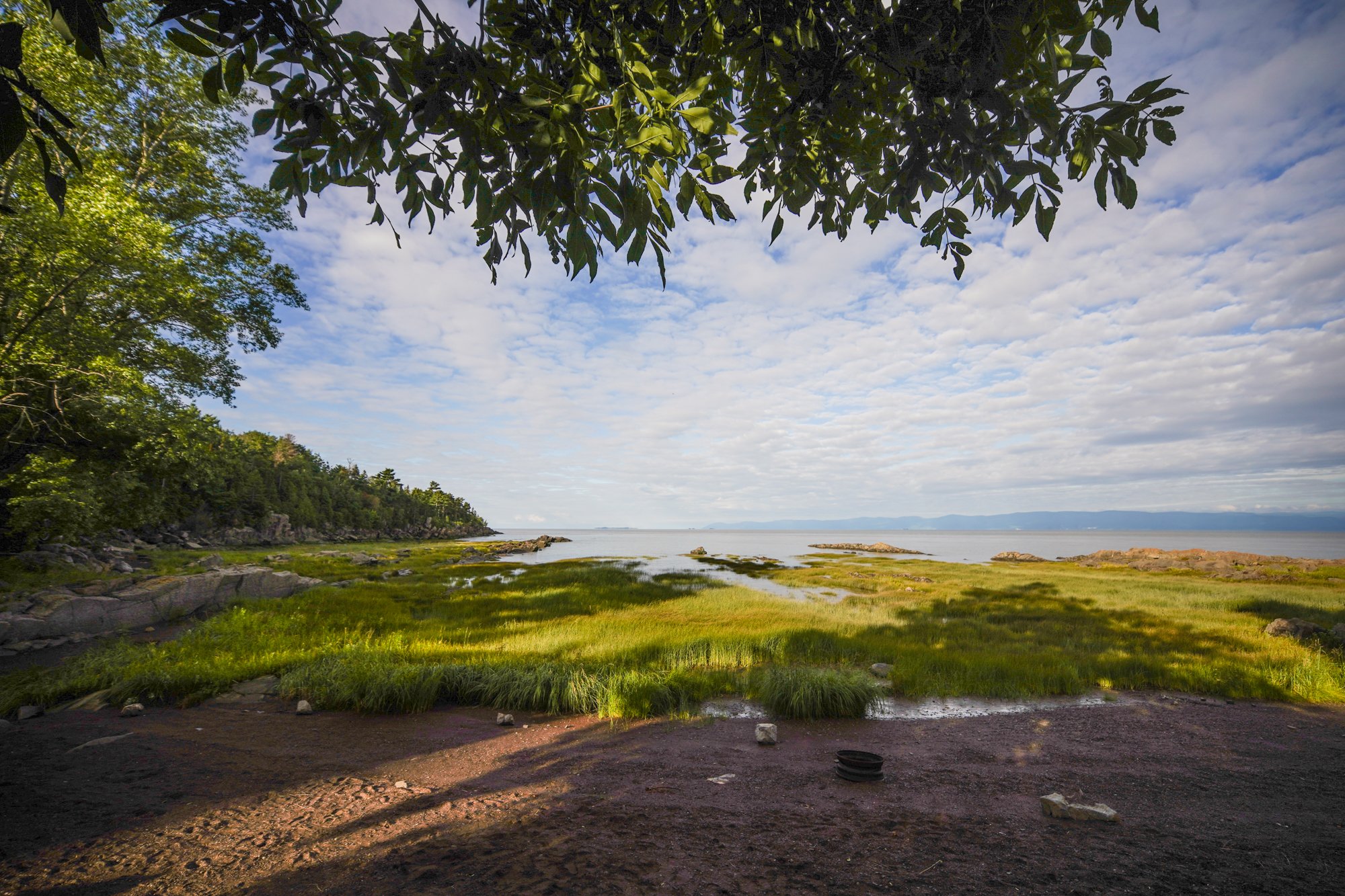



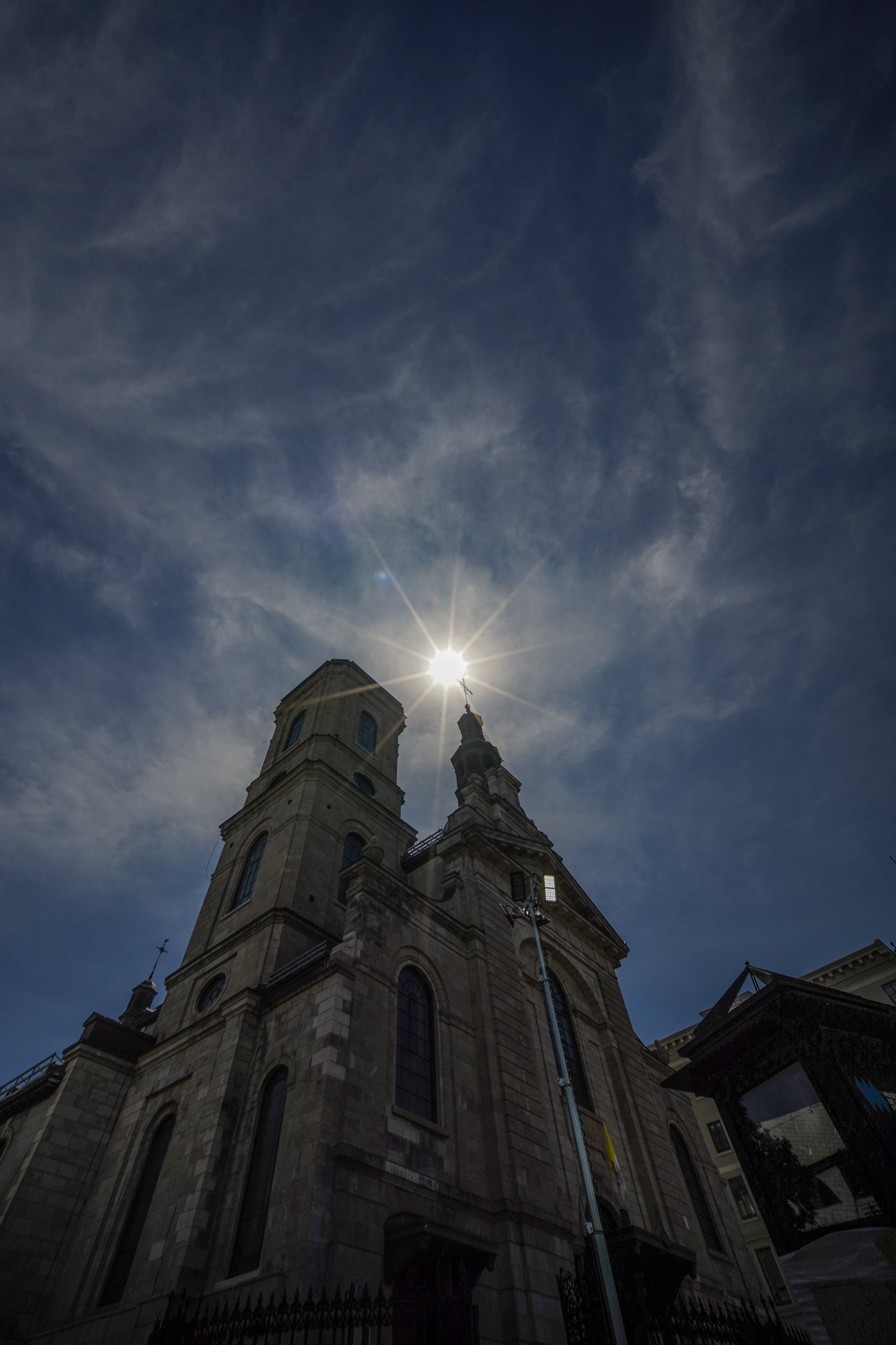

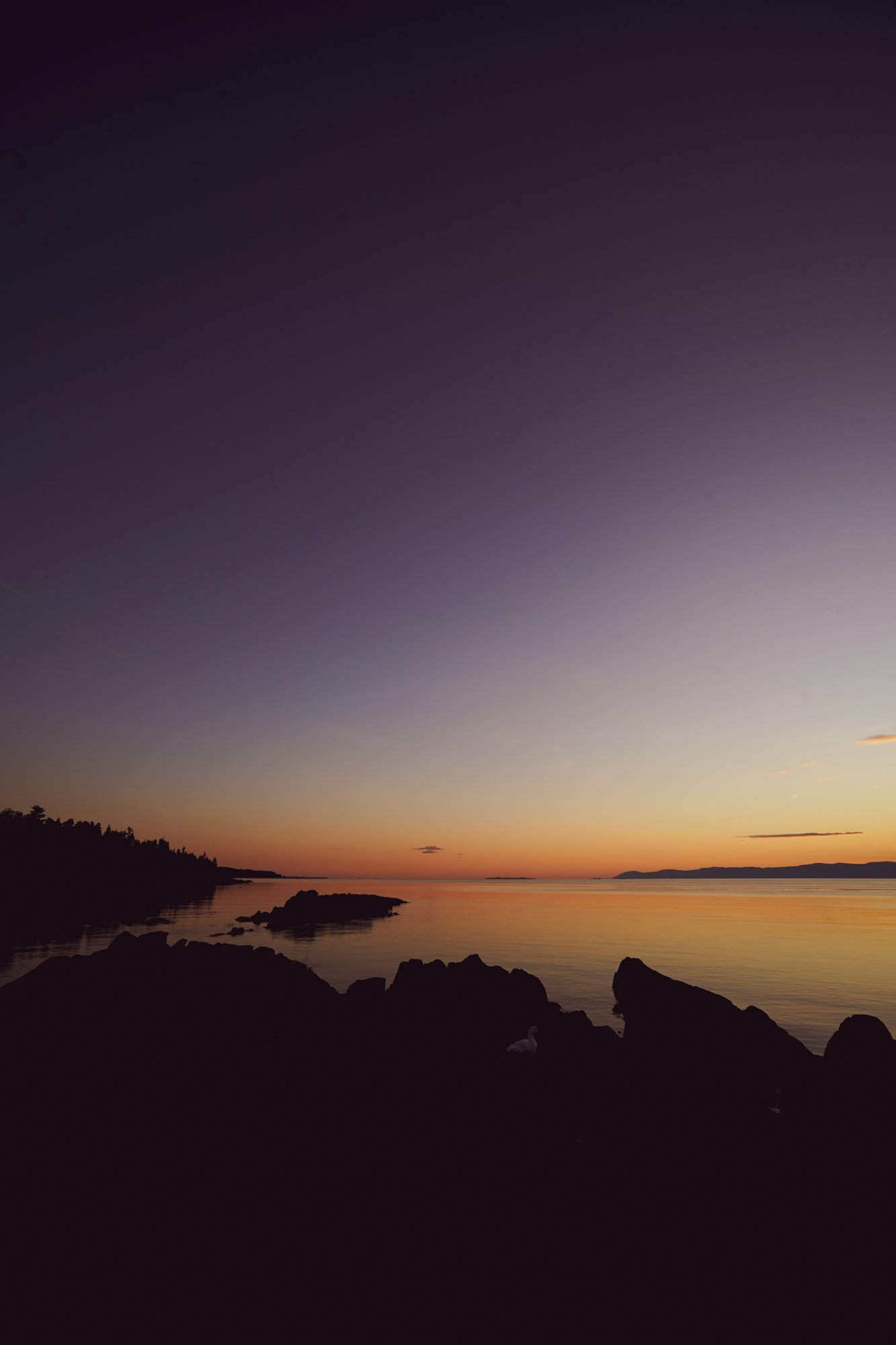







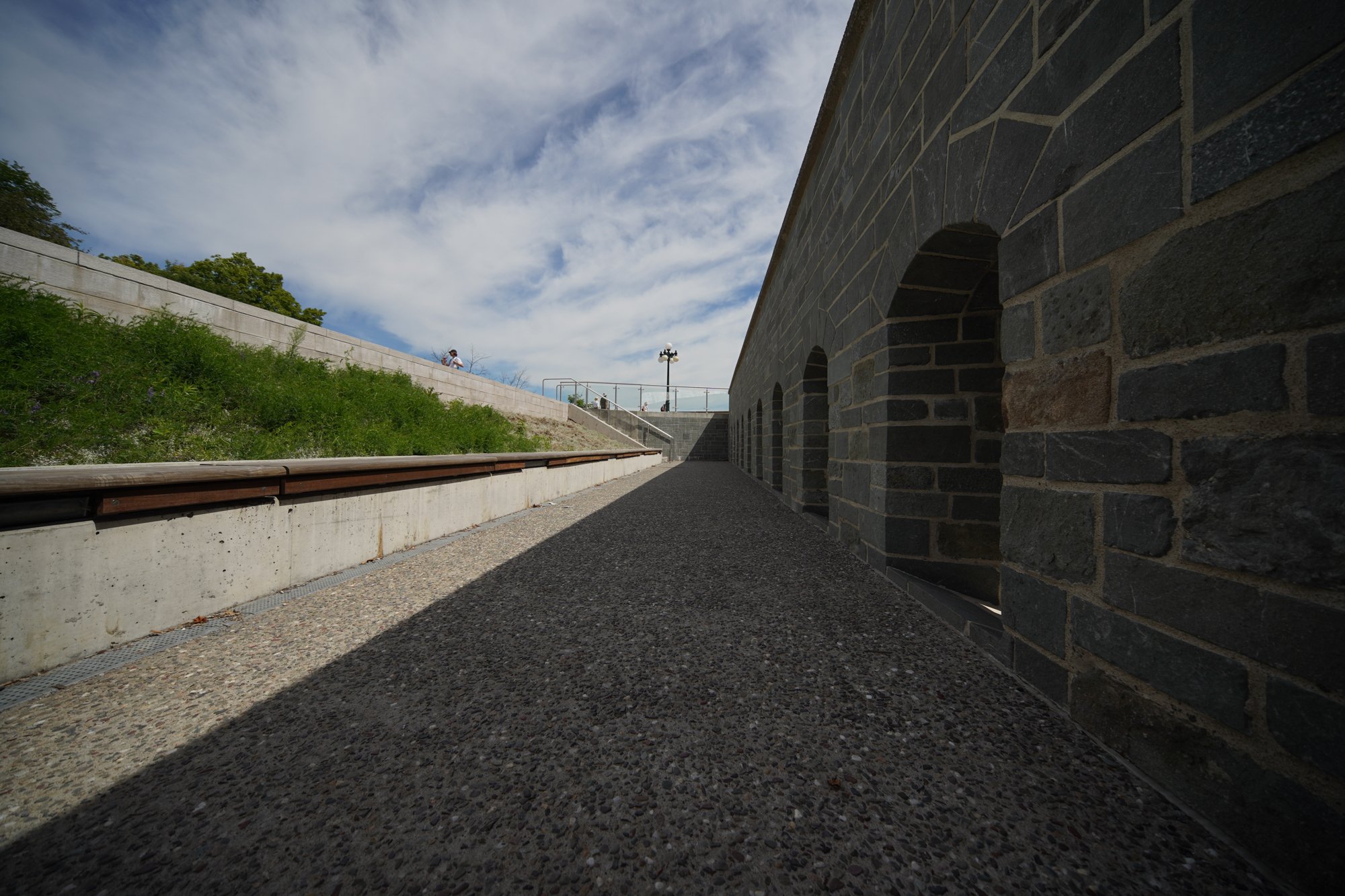

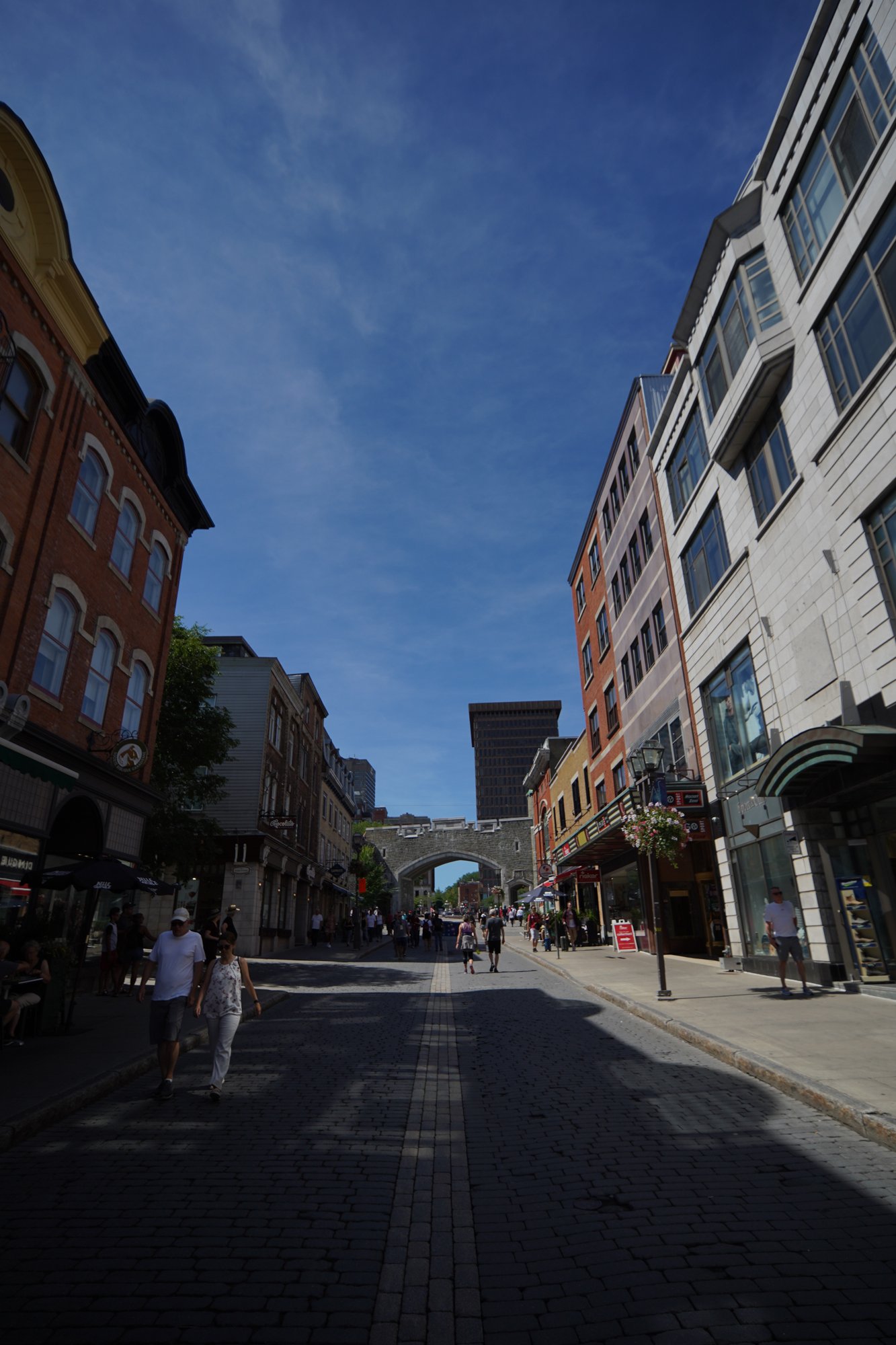



Conclusion
Laowa lenses generally offer compelling packages, never aiming for perfection but rather trying to offer a controlled set of compromises. For instance, not everyone can afford to spend $3000 to purchase the Sony 12-24mm F2.8 GM. Even the less expensive Sony 12-24mm F4 still demands almost three times the cost of the Laowa. Apart from these two lenses, there is no way to reach 12mm with an AF lens on the FE mount, and only a handful of manual focus alternatives (three of those coming from Laowa) excluding fisheyes.
Seen in this light, the compromises of the Laowa 12-24mm F5.6 can make a lot of sense. By sacrificing AF (manageable given the deep DOF of ultra-wide lenses) and a fast aperture (also manageable because one rarely tries to isolate a subject at 12mm), the lens can be small, rugged, inexpensive, cover a useful zoom range, and deliver adequate optical performances. And this is how the lens should be seen. Not as a competitor to the Sony 12-24mm F2.8 GM, but as a compact and affordable ultra-wide zoom. It is considerably smaller than both Sony lenses, making is easier to bring anywhere. As such, it is a good choice for travel.
Build quality is superb. Laowa lenses always impress in that regard, and the 12-24mm does not disappoint, quite the contrary. The three rings operate well, everything is tight and fluid, markings are easy to read.
Optical performances are made of ups and downs. The biggest “down” is that sharpness is underwhelming. Between 12mm and 18mm, it’s possible to find a winning combination of focal length and aperture to get the most out of the lens, with corners that will never really impress. At 24mm however, the lens is never truly sharp.
On the flip side, the lens delivers minimal distortion, no small feat for an ultra-wide zoom. Oscillating between 0.3% and 0.6%, it does better than many other lenses. Chromatic aberration is present but discrete, as is purple fringing.
Bokeh is interesting. The 5 straight aperture blades create pentagonal highlights which have become uncommon in 2022, but are not detrimental. Transitions are smooth and gradual enough. In short, bokeh is not typical of contemporary lenses, but remains pleasing.
Starbursts are magical. Well-defined, present but not overwhelming, the 10-points stars enhance images when used creatively.
Vignetting is important at all focal lengths. It will be best to plan on correcting it via post-processing most of the time.
Flare and ghosting are a weak point wide open and at wider apertures. The lens does better at 24mm, but the effect is present in many cases.
Colors and rendering are not easy to quantify. That’s too bad, because this is certainly an area where the Laowa 12-24mm excels. Colors are rich, shadows are full of details and images react well to post-processing.
In summary, the 12-24mm is a lens which can do well in the right circumstances, but certainly shouldn’t be seen as a direct replacement for more expensive alternatives. Truly, it is best to consider it as a 12-20mm F8-F11 lens, where the lens delivers its best results for sharpness and flare control. Is that a problem? Not necessarily, as this will often be the parameters which which it will be used. But expecting class-leading results at F5.6 or at 24mm is a recipe for disappointment.
We mentioned a few alternatives to the Laowa 12-24mm. The Voigtlander Heliar 10mm F5.6 is a prime with an even wider focal length, a similar aperture and a higher price tag. Laowa’s 10-18mm offers a more extreme focal range, a variable aperture and good optical performances. Laowa’s 12mm F2.8 Zero-D is another strong alternative. It is a prime, more expensive, but faster and with stellar optical capabilities. In the middle of the range, Laowa’s 15mm is a strong contender, and the Tamron 20mm F2.8 should also be part of the discussion. The Laowa 14mm didn’t impress us as much as its 15mm sibling but is another option.
We insisted a few times about the “compromises” of the Laowa 12-24mm. That might be a bit unfair. In a more positive turn, the lens is a good ultra-wide compact and inexpensive zoom which happens to be fully manual. As is visible from the sample pictures, when used within its capabilities, the Laowa 12-24mm can produce beautiful images.
Pros
- Light and compact
- Excellent build quality
- Inexpensive given its specs
- Very good sharpness at wide-to-medium focal lengths in the center
- Versatile focal range, one of few lenses reaching 12mm
- Superb colors and rendering
- Useful close focusing
- Interesting bokeh
- Low distortion
- Gorgeous starbursts
Cons
- Fully manual
- Sharpness in the corners and generally at 24mm underwhelming
- Important vignetting
- Flare present, especially at wider apertures
- F5.6 is more of an afterthought
Check Price & Reviews for the Laowa 12-24mm F5.6
At: B&H Photo | Amazon
Before You Go
Do you already own this lens? Are you curious about it? If you do, we’d love to hear your thoughts in the comments below.

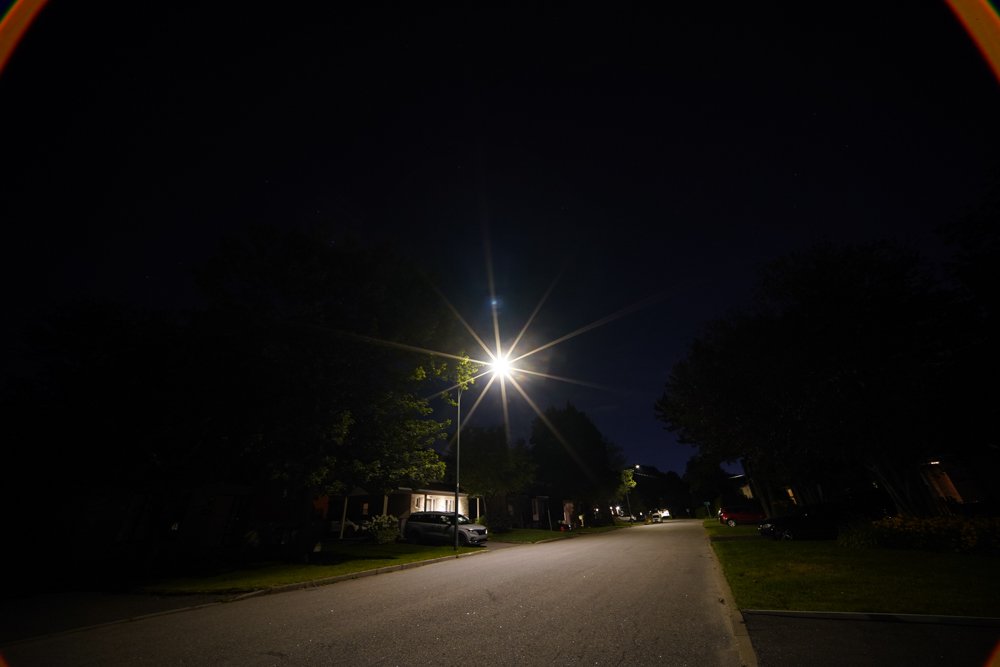
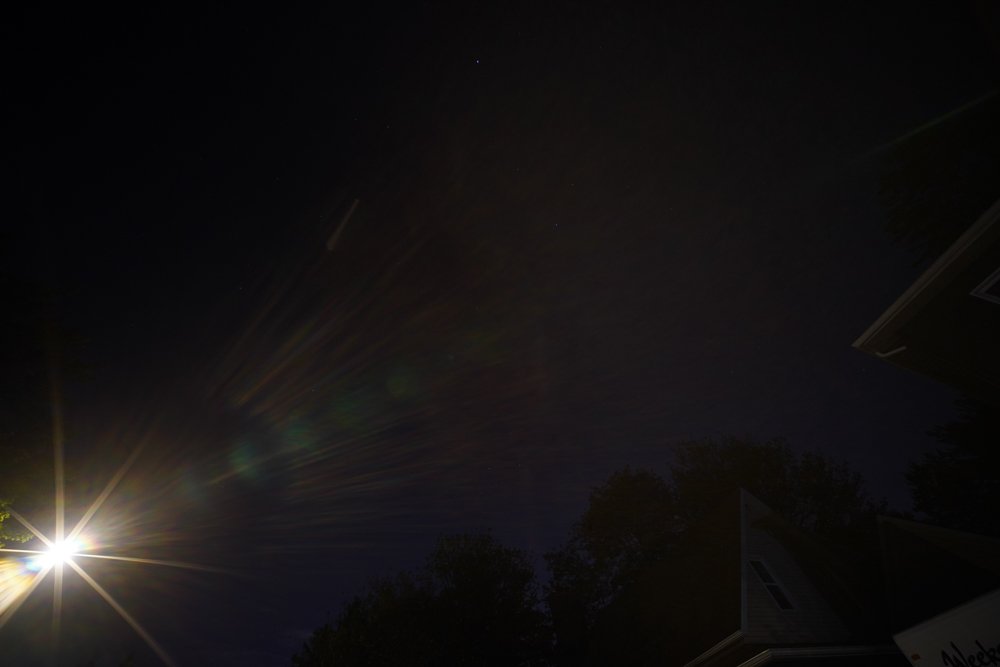
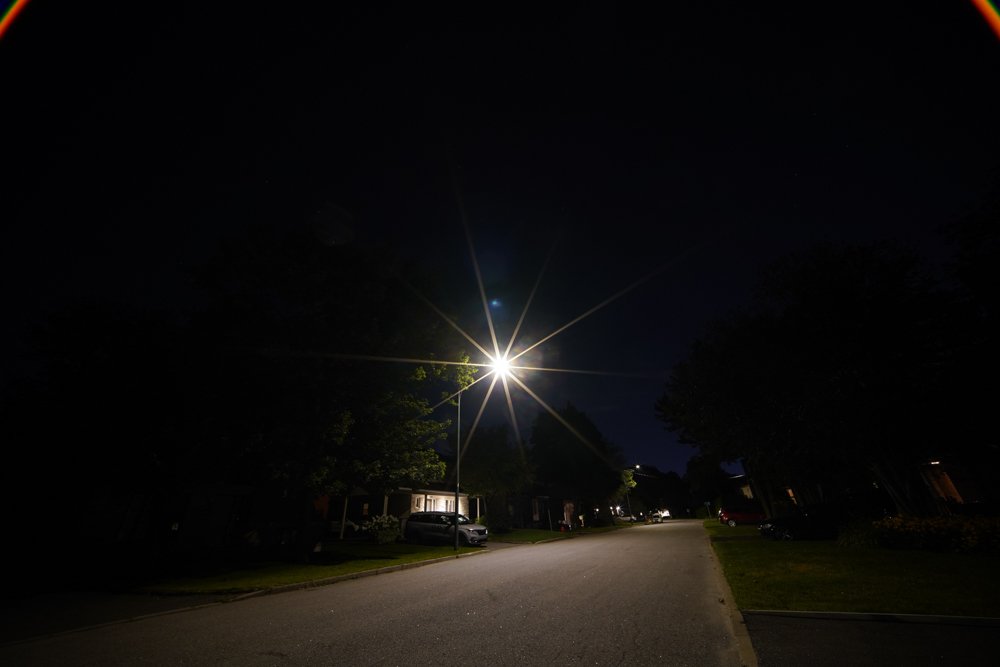
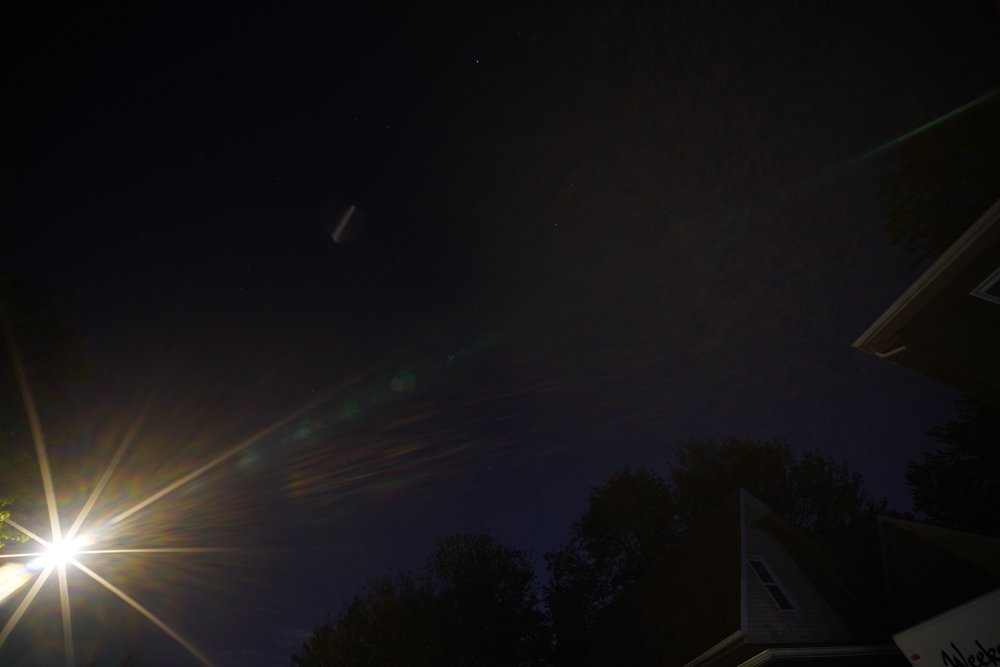
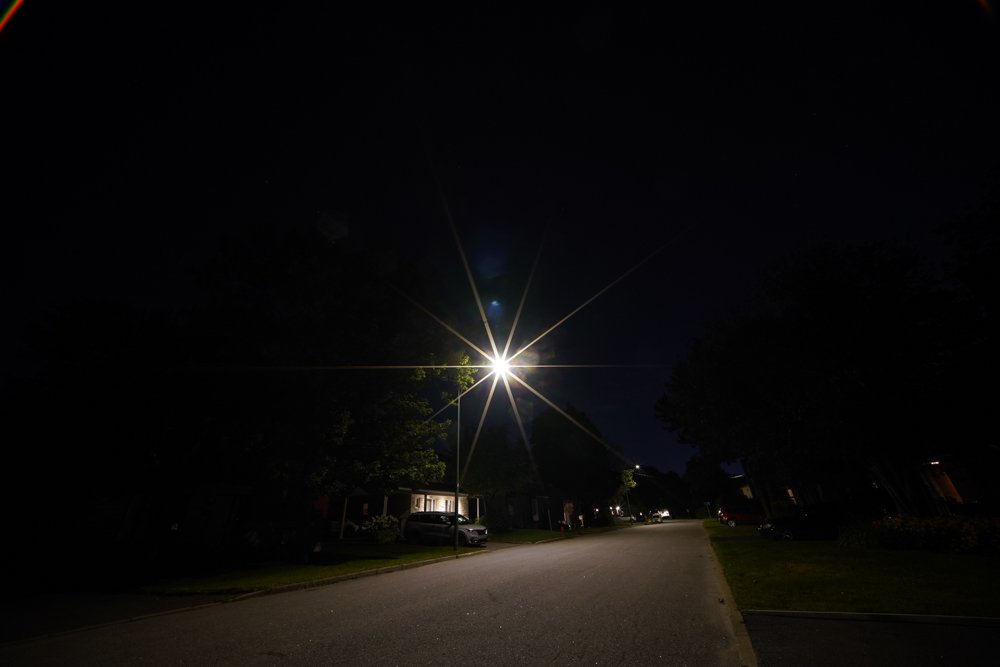
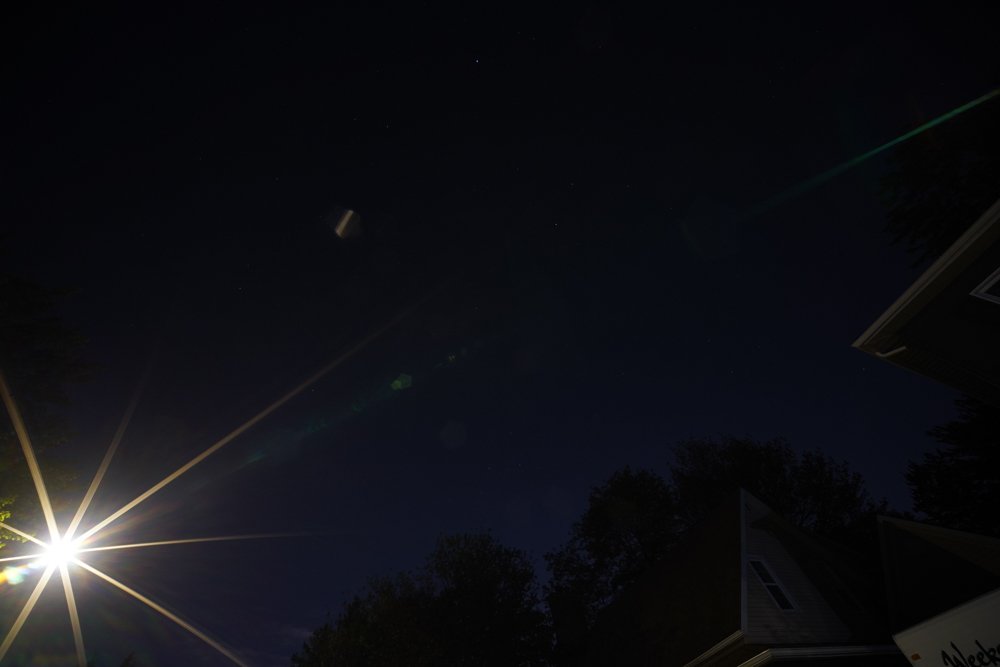
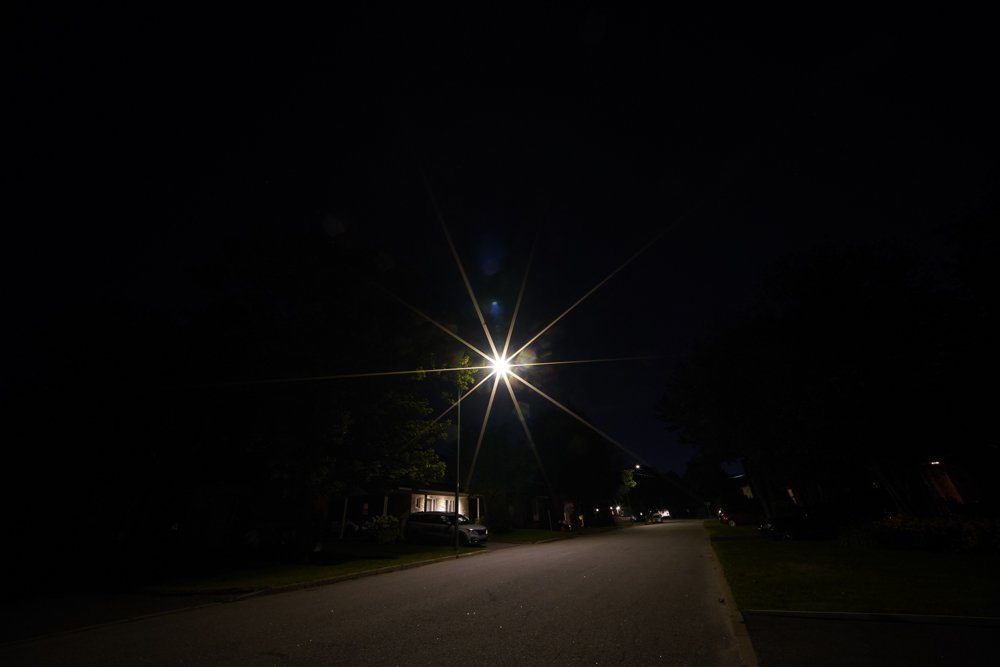
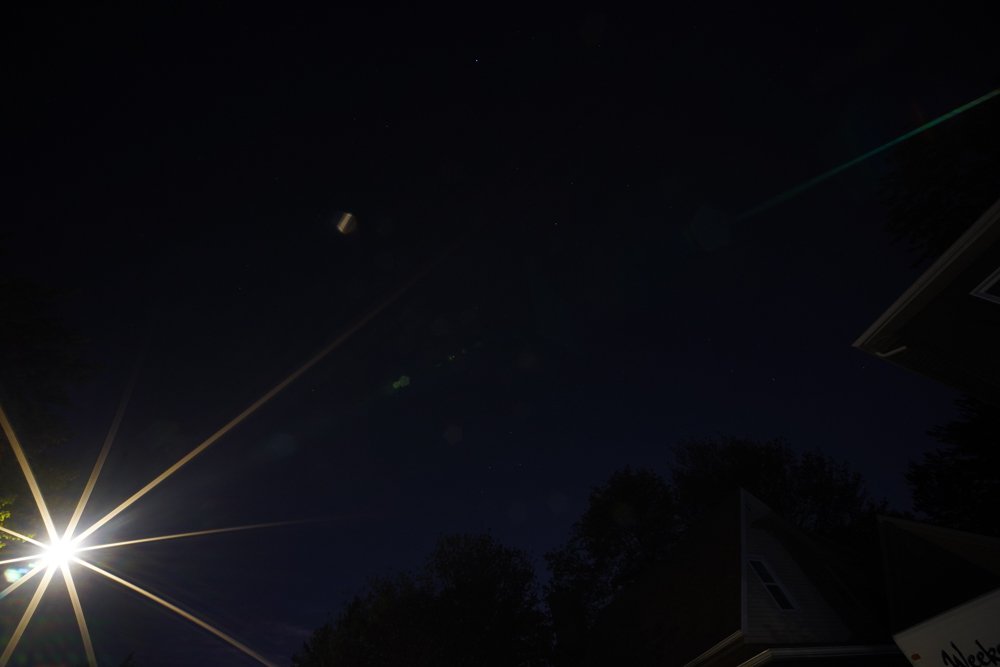




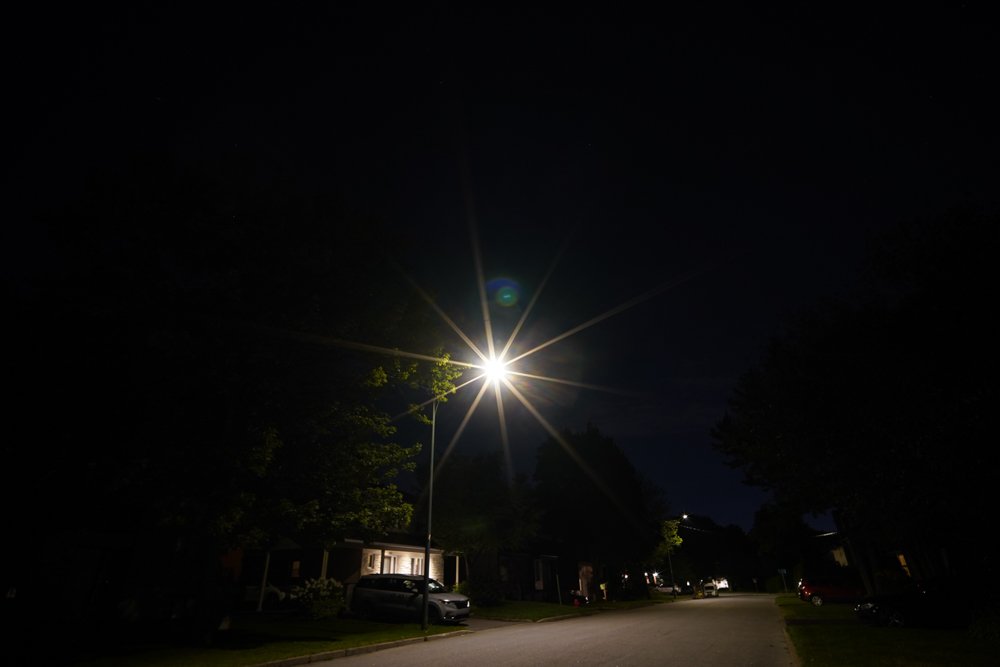
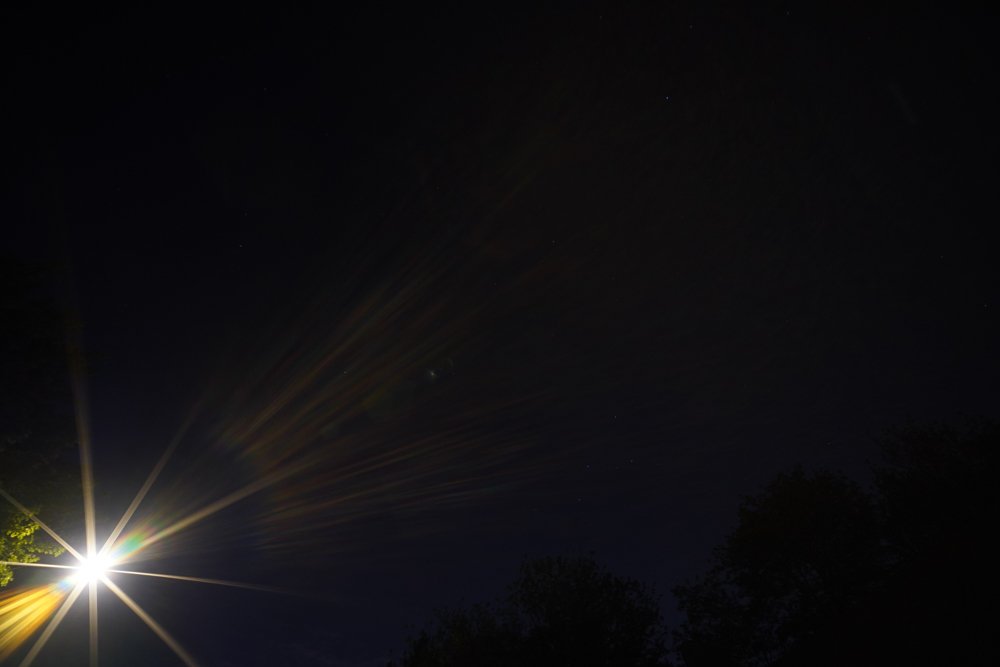
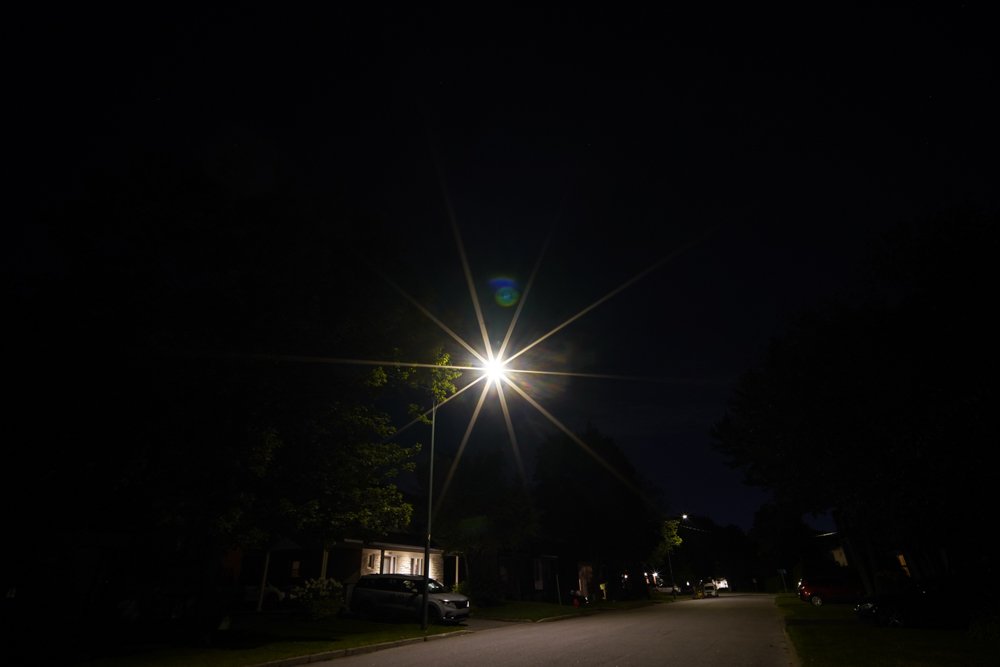
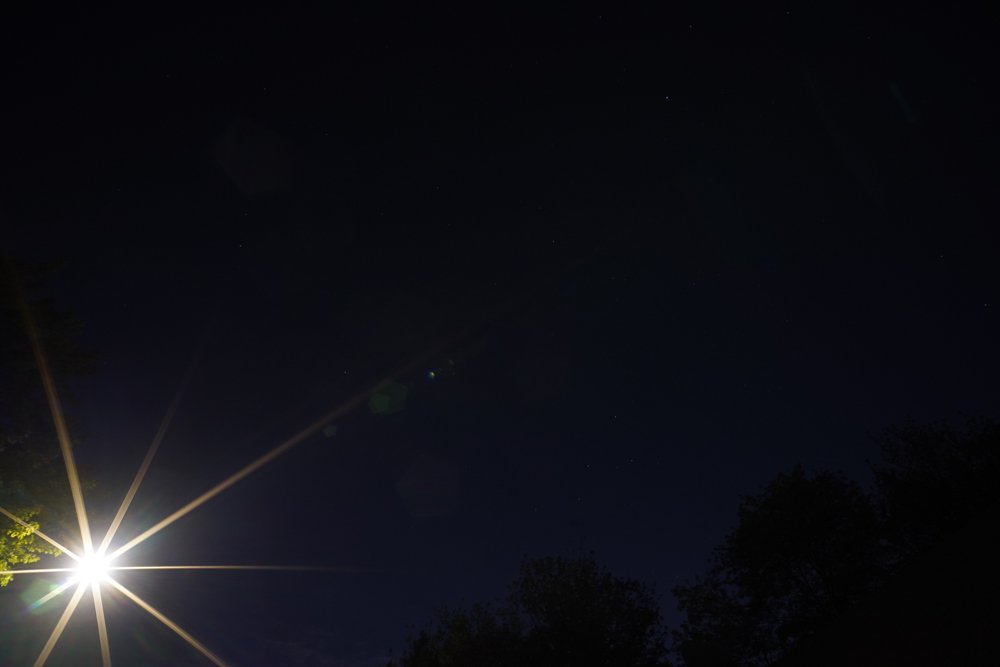
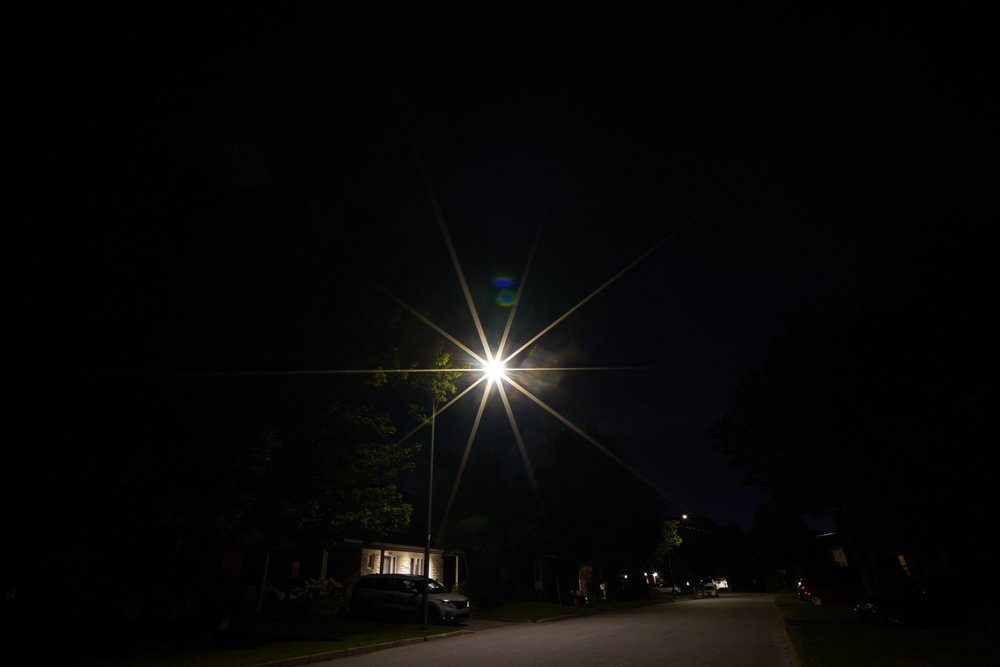

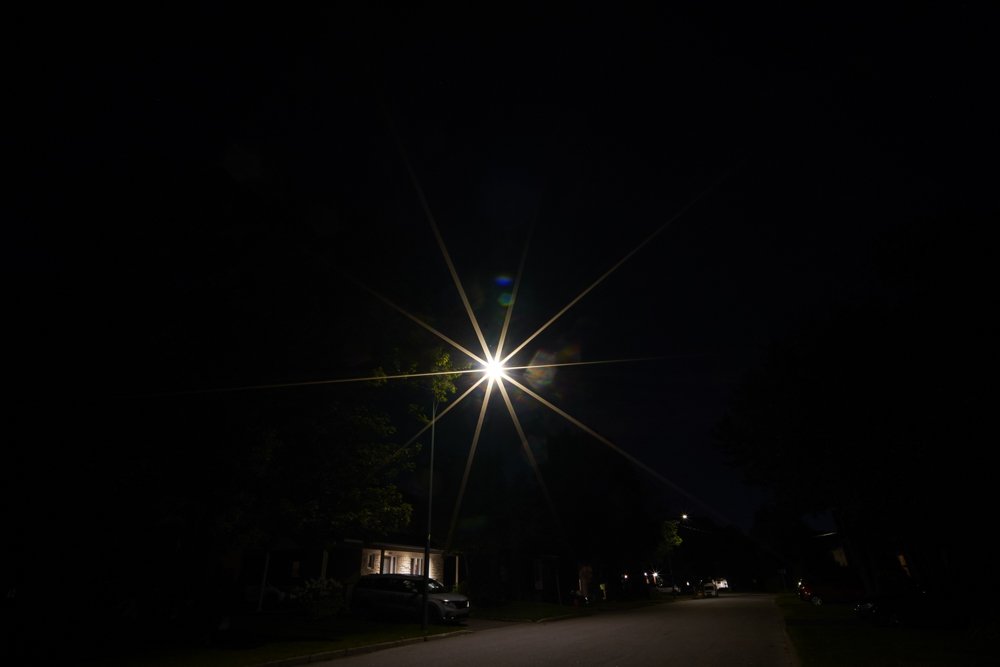

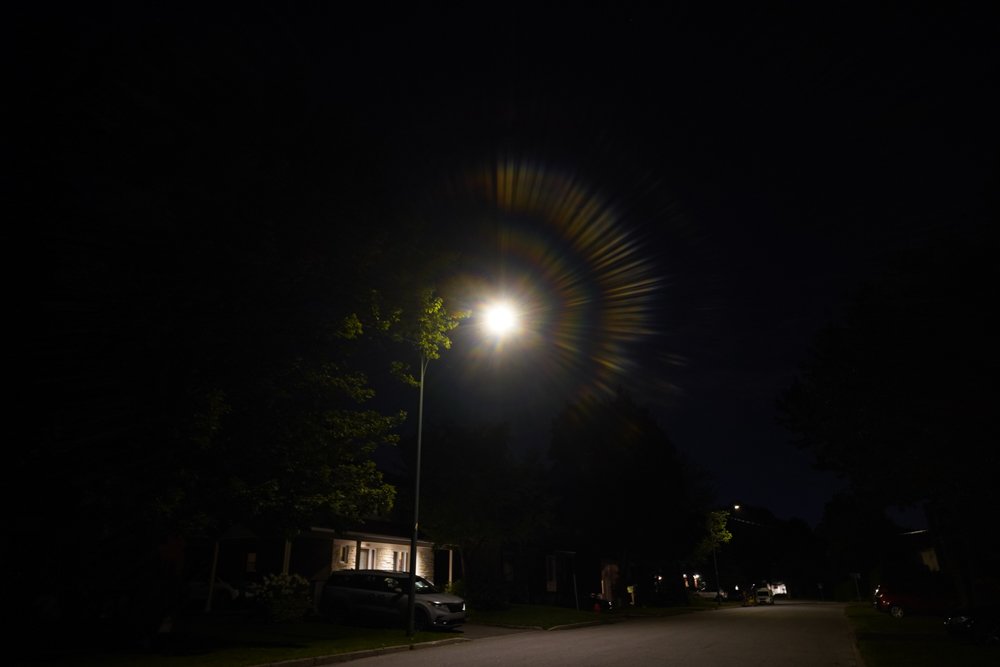
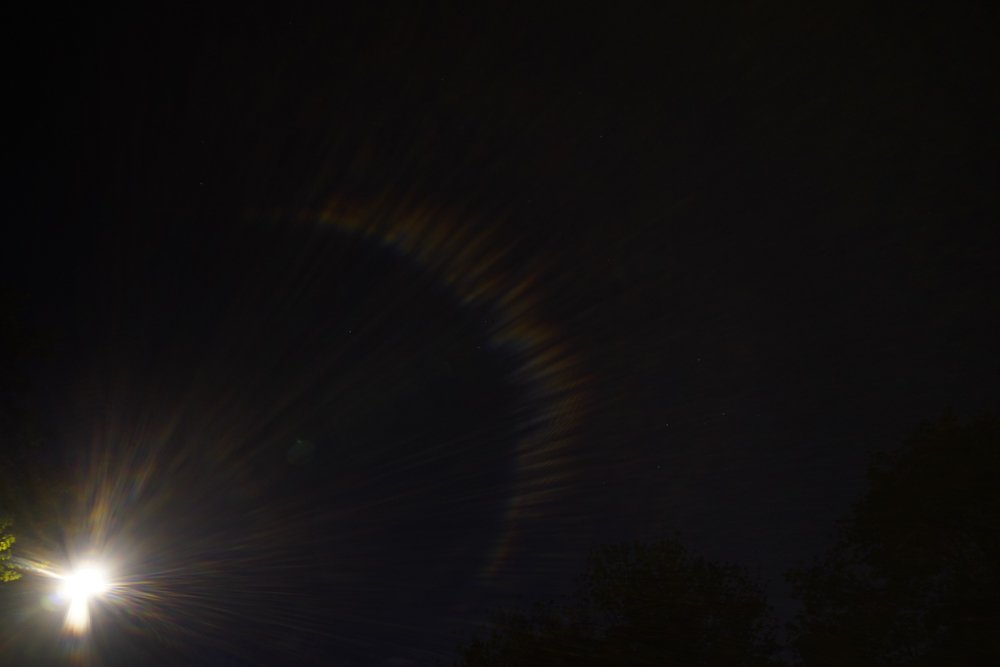
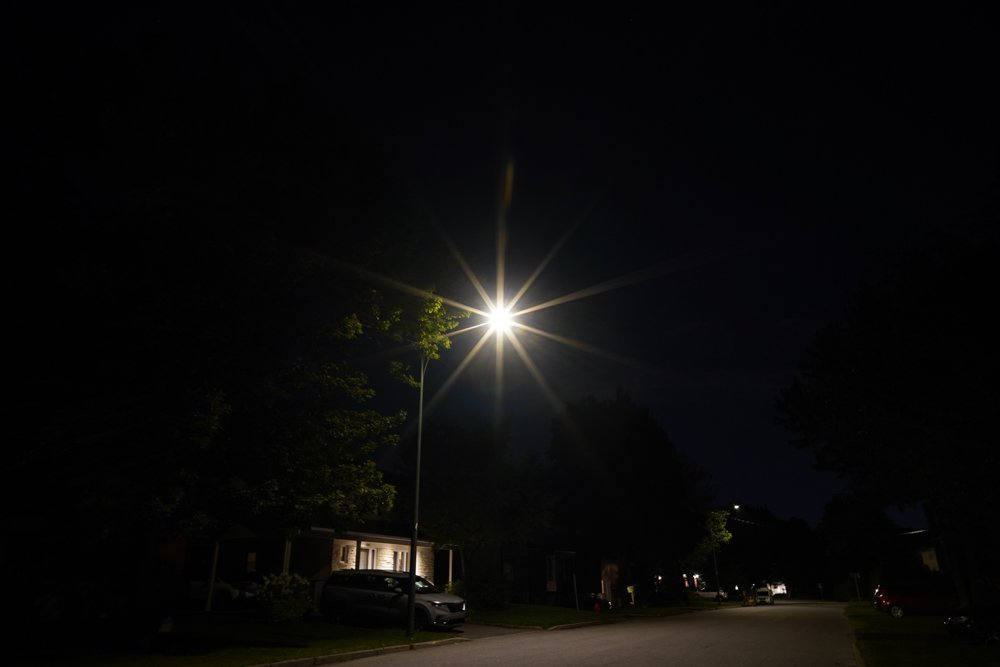
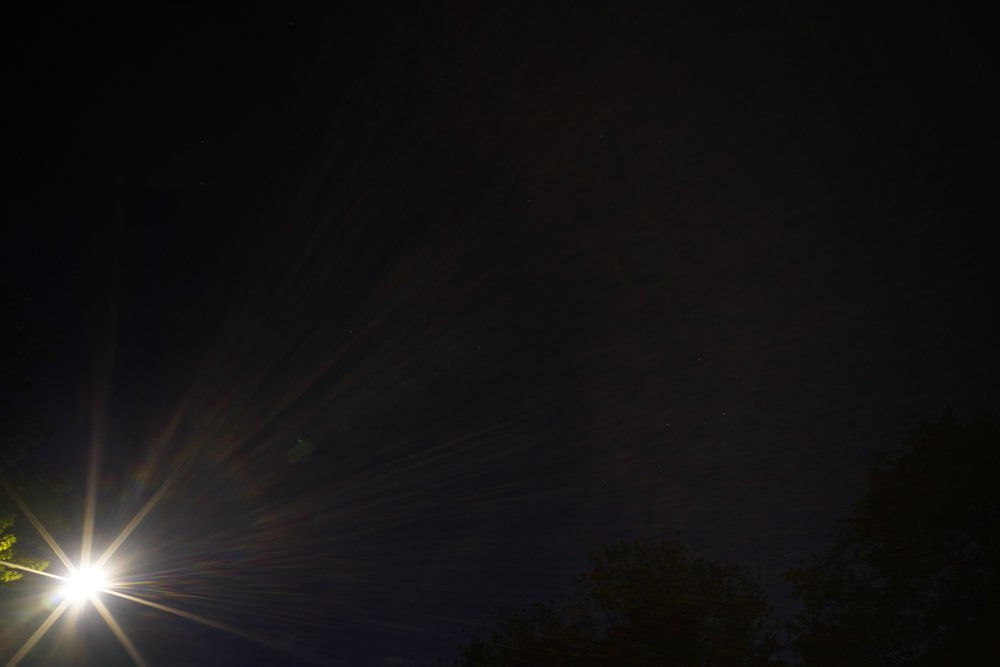


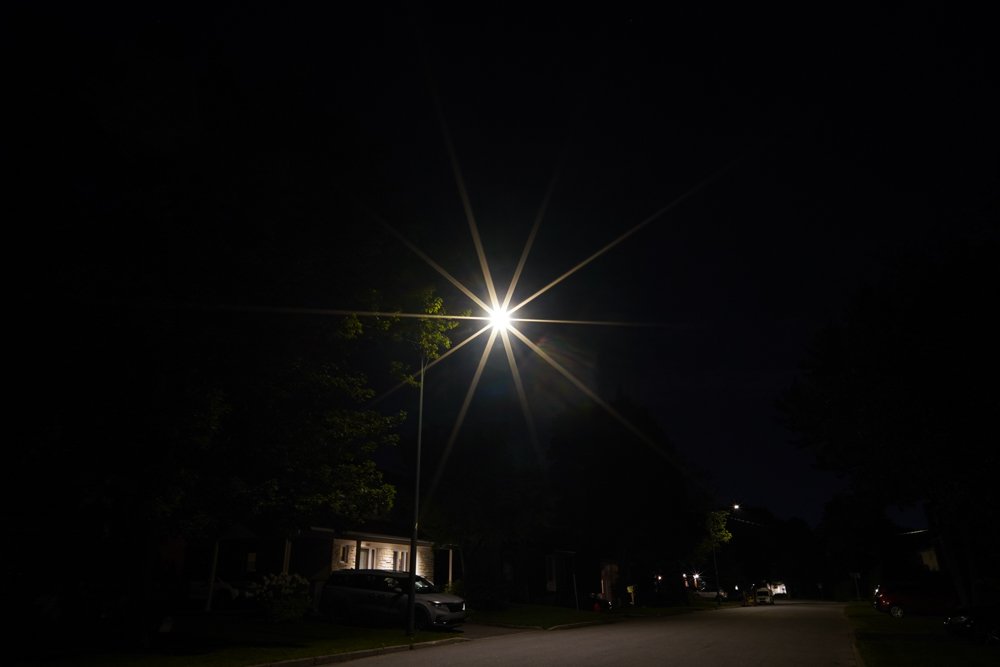
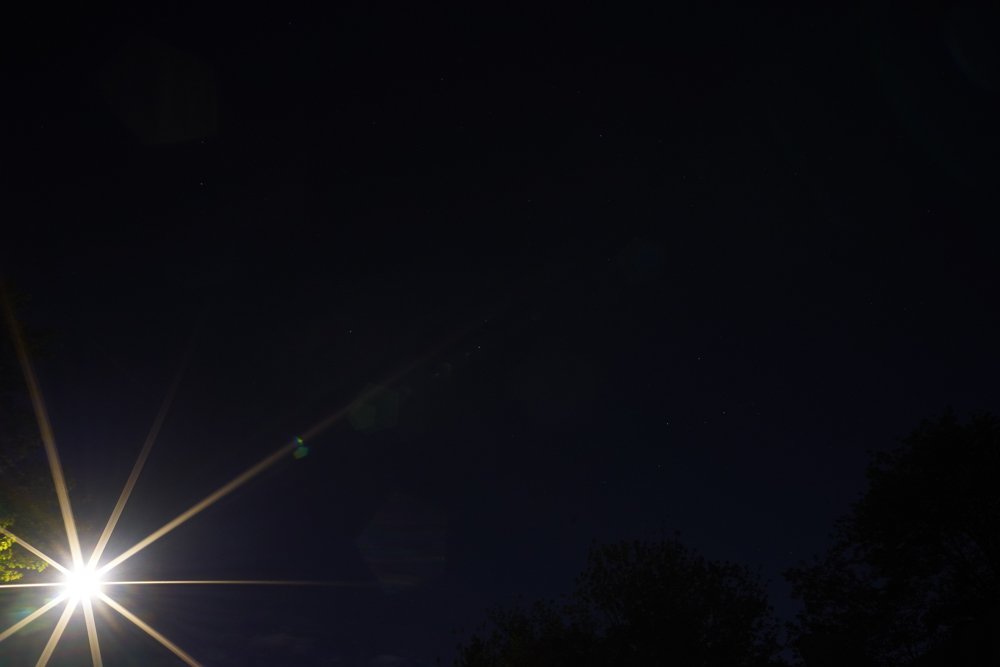
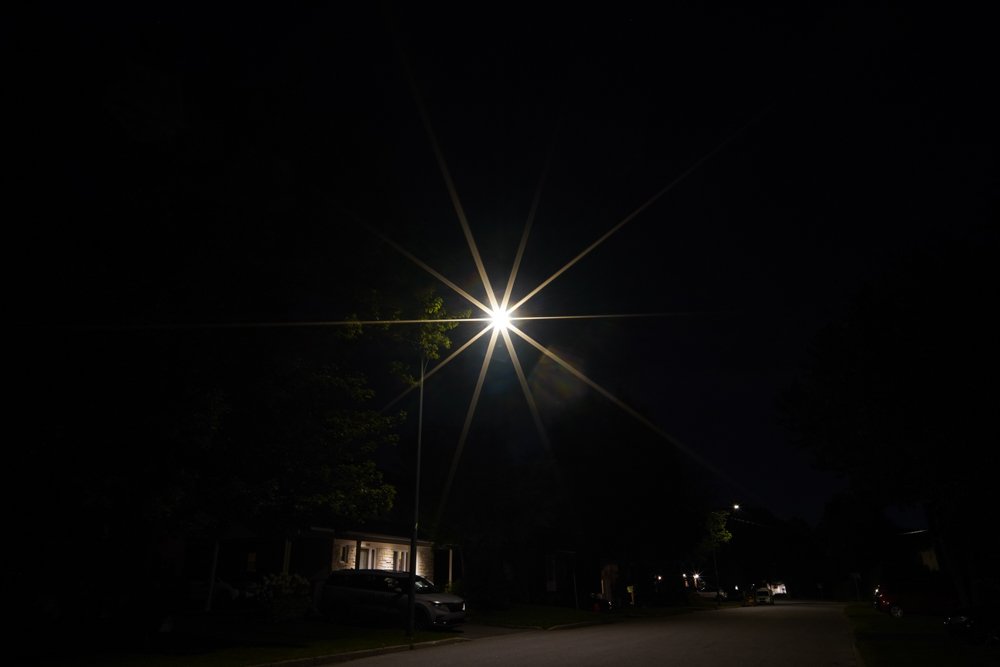


Leave a Reply